- All Products
- Protein Powder
- Protein Bars
- Energy Bars
- Energy Gels
- Energy Drinks
- Immune Support
- Meal Replacement
- Bundle Deals
- Batch Tested
- Sustainability
- Athletes & Ambassadors
- Coaches & Nutritionists
- Ambassador Programme
- Marathon Nutrition Plan
- Cycling Nutrition Plan
- Ironman Nutrition Plan
- Boost Immune System
- Affiliate Program

Pro Cycling's Dirty Secret

Cycling is great for the environment - pedal about your daily business and you can slash emissions at a pedal stroke. And the Tour de France is cycling in all its majesty, winding through Europe's most stunning natural landscapes. But, there is a big skeleton in pro cycling's cupboard - plastic
Absolutely bloody loads of it, mainly in the form of riders' water bottles (or 'bidons' in cycling geek-speak) tossed to the roadside/hedge/cliff as the peloton powers past. From the Grand Tours to the Spring Classics, pro bike racing is awash in a sea of plastic.

Power, grace, beauty. Oh, and fly tipping
Officially, this never happened
Officially there are designated waste collection areas for bottle tossing, at the start and end of feed zone areas.
There was the rule book which said: "to respect the environment... it is strictly forbidden to carelessly jettison... drink containers or any other accessory outside of the waste collection zone" .
While the riders' road book said: "I will use the bins... at the start and end of the feed zones in which to throw my rubbish... Outside of the feed zone, I will put my rubbish in my pockets".
So everyone was in agreement - there would be absolutely no random bidon tossing and populating the most beautiful parts of the world with endless rancid plastic bottles.
Watch the races though and you'd see a very different picture as bottles and wrappers sprayed from the peloton into the surrounding countryside.
Then this year the rules changed (and all hell broke loose)
As if reading our suggestions below in this very article ( originally written in 2018 this piece has been updated as the rules finally start catching up ) the UCI chose to disqualify riders who threw bottles where they shouldn't.
And given the uproar this caused from a shouty minority of pro cycling insiders, you'd think the UCI had suggested the death penalty rather than simply a bit of sensible and environmentally-beneficial rubbish collection. It wasn't even a new rule, merely the actual enforcing of an existing one.
Said insiders banged on about how much fans loved getting riders' bottles (we disagree, see below) and how much a bottle thrown to them from their hero in 1802 when they saw their first ever live race was what made them want to cycle forever.
But these diehard pedalheads miss the bigger picture because the environmental and cultural impacts of pro bottle-tossing are no longer even close to acceptable.
When a race like the Tour de France can generate almost 9,000 used water bottles alone, making nearly one metric ton of plastic (see 'How many bottles does the Tour de France use anyway' below), every effort must be made to reduce the amount needed in the first place, and ensure used bottles are properly cleared up and recycled.
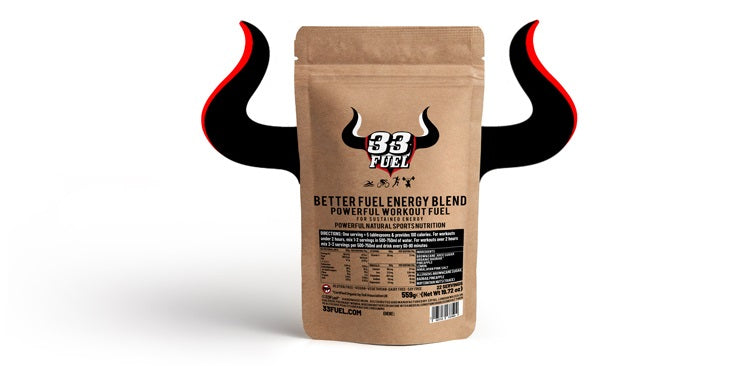
We don't provide a plastic scoop in our Better Fuel Energy Blend or any of our powdered products, because the last thing the world needs is more plastic and you probably have a spoon at home ;)
What happens to the Tour's lost bottles?
An oft-repeated reply is that tossed bottles are leapt upon by eager fans. Two points do rather puncture this idea of a virtuous cycle attached to what is little more than high-speed fly tipping however...
- Seriously, do you want someone else's water bottle? Particularly after they've spent the last hour sweating and dribbling all over it. In a global pandemic...
- Even if you did, many are inaccessibly lost in the undergrowth
Another common response is that the official cleanup crew gets the rest as they come through behind the stage. The thorn in this theory's side is the aforementioned horde of bottles buried in the surrounding countryside.
Even the most committed eco-warrior would think twice about digging for days in search of these, let alone a part-time bin man in a hurry on ten euros an hour if he's lucky.

Geraint Thomas catches back up to the peloton after diverting mid-race to a nearby recycling station with his empty water bottle. Possibly
How many water bottles does the Tour de France use anyway?
Lets look at the maths quickly:
The Tour has 176 riders and let's say each rider uses 4 bottles daily. He ends each day with one bottle and is - theoretically - able to use that bottle again, leaving 3 'disposables' daily. The Tour is 21 days long, but we need to subtract 2 rest days and 2 time trial days.
That leaves 176 riders x 3 bottles x 17 days, or 8,976 water bottles discarded by the peloton during the Tour.
Bloody hell.
Now before we all have a fit, let's be kind and say 50% make it into the official disposal areas/cleanup or are picked up by deranged fans itching for some lukewarm pro backwash.
This still leaves 4,488 water bottles rotting in the countryside.
Assuming all bottles are the smaller 500ml varieties weighing around 80g each (they're not, many are bigger), that's over 359kg, getting on for half a metric ton of plastic...
The UCI's enforcement of bidon rules, which let's remember is only asking riders to do what's already in the rule book, wipes out all of these lost bottles at a stroke.
Pro rider bottle tossing - the cultural impact
It's not just the environment that takes a hit each time a pro bidon soars into the shrubbery, it's sports culture. The simple message broadcast is 'when you are exercising hard, fly tipping is fine'.
Best Sellers
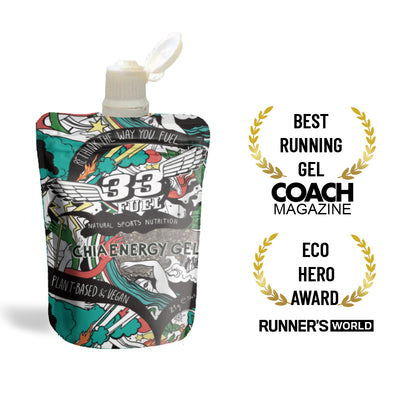
Chia Energy Gel

Ultimate Daily Greens
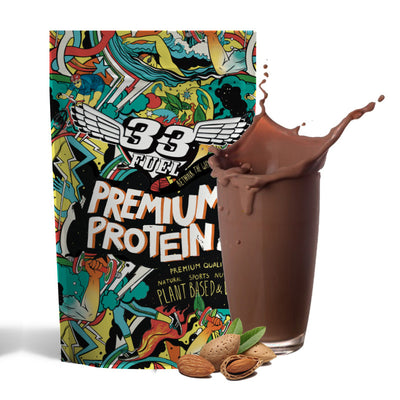
Premium Protein
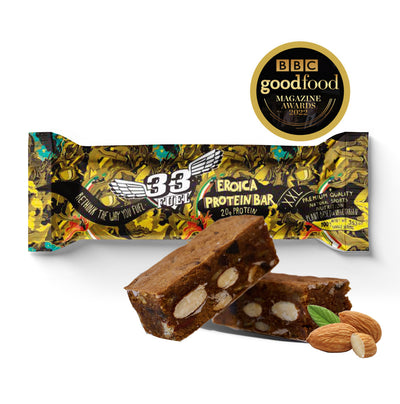
Eroica Natural Protein Bars
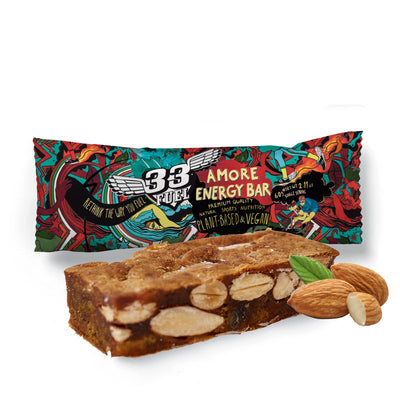
Amore Natural Energy Bar
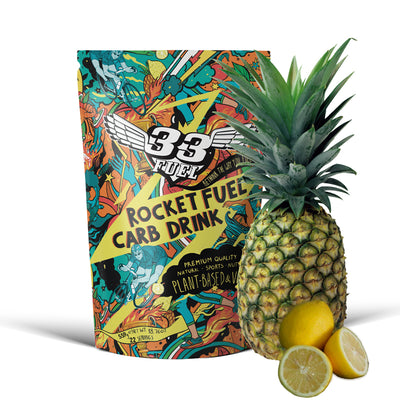
Rocket Fuel Carb Drink Blend
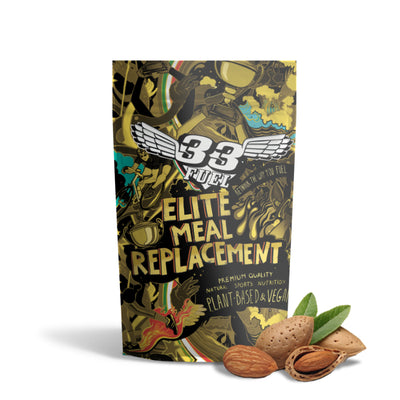
Elite Meal Replacement
It can even be a sign of just how hardcore you are.

As Velominati , keepers of cycling's 'rules' explain: "I can only imagine the moment in a young Pro's life when he first gets to fling an empty to the side of the road. There must be no clearer sign that you've hit the big time" .
The result of this outdated thinking isn't just mass-participation events swamped in half-empty bottles and gel wrappers, its high-traffic training spots loaded with it too as Bob from Crawley powers to a bedwetting 12mph average on his Sunday ride and is far too deep in 'the zone' to possibly put that empty gel wrapper back in his pocket.
From Box Hill to Mount Ventoux and Richmond Park to the Western States trail, our training highways and byways are adorned with sports nutrition detritus.
Trail trash, route rubbish & binned bidons - the solution
Amazingly, this is really bloody simple.
For pro cycling
Forget financial punishment, go for heavy time penalties for anyone bottle-tossing outside of designated areas. Dock offenders to the tune of several minutes and compliance can be guaranteed overnight.
Note: this was our 2018 suggestion, the UCI's bidon rules brilliantly went further, actually disqualifying riders who binned bottles in the wrong place. Better still, when riders broke the rule in the Tour of Flanders, the UCI followed through and disqualified them.
And this is where things got weird. Because the riders & teams (who all knew about the rule they had just broken and the penalties involved) complained that their penalties (as outlined in the rules they knew all about) were too harsh.
There are many issues in pro cycling worth fighting to improve from dodgy barriers and dangerously narrow finish chutes that are way too fast, to mental health, eating disorders and drug use, but 'putting your rubbish in the bin' isn't one of them.
Anyone who says doing this is too hard has lost the plot.
Pro cycling is tough and prides itself on being such. Anyone who can't hack carrying an empty bottle until they see a rubbish area is clearly in the wrong sport and should take up knitting.
As for the handful of cycle-obsessed small children who will now be deprived of the opportunity to have a bidon tossed their way, we suggest that they will get over this quite quickly and may appreciate the fact they actually have a planet left to cycle on in 40 years a little bit more.

Do good on your next ride or run, and earn trail karma - you never know when it'll come in handy
For the rest of us
Whether it's a bottle, bar wrapper or a gel pack - we carried it in. Now it's empty and even lighter, we can carry it out and recycle/bin later.
For those keen to take this a step further, the concept of 'trail karma' as first introduced by our good friends at Trail Runner Nation podcast is the answer.
The idea here is that by doing something simple and selfless while exercising - like pocketing an empty wrapper someone else has discarded - you bank karma, which is repaid next time you're in a bind.
It could be that tree root you just miss turning an ankle on mid-run, the storm that holds off until you're home or the random rider who lends you a pump when you're out of gas canisters mid-puncture.
It's all karma baby. So next time you see some ignorant twonk's sports rubbish at the roadside, pick it up and gain a few karma points - y ou never know when they'll come in handy.

100% recyclable and with a resealable cap so you can easily stash empties in your pocket or pack with no mess, our chia energy gels are designed with the environment in mind
More performance-boosting content
From the vlog - fuel like a pro with hannah grant.
From the Podcast - How to achieve sustainable weight loss
Fom the 33 blog.
Why pro athletes have terrible nutrition
10 best anti-inflammatory foods
How to use caffeine for performance
Return to training after time off
How to burn fat during exercise
- Share full article
Advertisement
Supported by
A Ban on Bottle Tossing Disrupts a Tradition in Cycling
Riders’ water bottles are treasured souvenirs among cycling fans. Cyclists are unhappy with a new rule that outlaws tossing them into the crowd.

By Juliet Macur
Alex Howes, an American cyclist on the EF Education-Nippo team, heard a familiar sound from roadside fans at the Itzulia Basque Country race in Spain last week.
“Bidon! Bidon!” they cried out, imploring him to throw the bottle he held in his hand. Bidon is cycling lingo and the French word for water bottle, and the fans pleaded for one as a race souvenir, Covid-19 and backwash be damned.
Catching a bidon thrown by a rider is a cycling tradition; it’s the sport’s version of getting a foul ball at a baseball game. But evidently it is not sacred in the eyes of the International Cycling Union, the sport’s global governing body. The organization instituted new rules that prevent riders from tossing trash, including bidons, anywhere but in specified areas, effectively putting an end to the spontaneous toss-and-catch ritual that has lasted for decades.
The rules went into effect on April 1, and afterward Howes could only apologize to fans.
“I’m so sorry, guys, but I can’t,” Howes recalled saying to the crowd as his pockets and jersey were stuffed with used bidons. “I want to keep my job here.”
Two riders have already paid a high price for breaking the new rules.
Michael Schär of Switzerland and Letizia Borghesi of Italy each threw a bidon outside the designated litter areas at the Tour of Flanders just days after the regulations went into effect. Schär threw a bidon into a group of fans. Both were disqualified from the race.
“For this unconscious gesture, they really made me feel like a ‘criminal,’” Borghesi wrote on Instagram, adding: “Also bottles don’t pollute because they are collected by children or fans who are collecting them. I think seeing a child smile when picking up a bottle on the roadside is priceless.”
Chris Froome, the four-time Tour de France winner, called the ban “ridiculous” in a Twitter post that included a clip of him throwing a bidon to a cheering fan during the Volta a Cataluyna in Spain at the end of March. Froome noted, with an eye-rolling emoji, that the move now would warrant disqualification.
Thomas De Gendt, a Belgian rider, called the issue “bottlegate” and also said the rule needed to be changed.
“I understand that we can’t throw bottles in the nature,” he wrote on Twitter. “But giving a bottle to a fan who is asking for one is something totally different.”
The cycling union said that the rules were made to promote rider safety and to respect the environment, and that riders, teams and race organizers had jointly adopted them in February. Cyclists had two months to prepare themselves, so the change should have come as no surprise, said Louis Chenaille, the spokesman for the cycling union.
“We firmly believe that these measures, which in some cases require changes in attitudes, will contribute to making cycling the sport of the 21st century,” he said in an email last week.
On Wednesday, the Professional Cycling Council — an association of riders, teams, organizers and the International Cycling Union — met online to discuss the controversies. They agreed to do away with immediate disqualification of riders who break the trash rules in a one-day race, reducing a first-time offense to a fine and loss of points. In a stage-race, disqualification now would happen after a third offense. The rule change will probably become effective on April 17, upon approval by the cycling union.
The effective ban on bidon tossing remained in place. “Throwing bottles to the public, in particular, is a proven danger both for the riders and the public,” the cycling union said in a news release. The organization said the rule also helped discourage young fans from getting too close to riders while vying for a bidon and possibly getting hit by a rider or a vehicle.
Along with safety, the sheer volume of trash is a concern. For generations, many riders were, let’s say, less than respectful of the environment. They chucked sandwich wrappers over snow-covered Alpine cliffs. They hurled cotton musette bags, which hold riders’ snacks, into previously pristine rivers. They tossed bidons onto farms, at the feet of grazing cows and into fields of towering sunflowers. And some of that cavalier littering was caught on live TV.
Christian Prudhomme, the race director for the Tour de France , said last week that he had received countless complaints from people who saw riders throw trash into nature. So in 2010, he and the Amaury Sport Organisation, which runs the Tour and other cycling races, decided to set up three dedicated trash areas along each stage. Last year they raised the number to six, he said, and now the cycling union insists that races have trash disposal areas along their routes.
Teams now have to figure out where to put their used bidons, if not into the hands of clamoring fans. And there a lot of bidons involved.
These days, one team could use 100 per day, according to Paul Navin, who does massage therapy and other vital tasks as a soigneur for Howes’s team. At the Tour de France this summer, that would be 100 bidons times 23 teams, then times the 21 days of racing. It adds up to 48,300 bidons along a course of 2,000-plus miles.
Those bidons now need to be disposed of in specific ways, which include giving them to a team soigneur or throwing them into any team’s car. Navin explained that he now waited at the side of the road with a garbage bag so his team — and any other team — could throw away its bidons. He spends extra time searching the area for errant ones, nervous that he will be fined for leaving trash behind.
Howes’s job just got harder, too. As a domestique, which is a team’s worker bee, he had the job last week of picking up filled water bottles from the team car and distributing them among his teammates. He then had to collect the used bottles and find where to dump them — without breaking the rules. On one occasion, he took a 30-minute detour to drop bidons into a race judge’s car.
“Meanwhile, there’s a thousand people on the side of the road, yelling, ‘Bidon! Bidon!’ And I can’t even give them a small piece of the race that would make them so happy,” he said. “It’s beyond frustrating.”
The introduction of the new rules has hardly been smooth, Howes said.
Throwing bidons to a soigneur on the roadside has been a challenge for the cyclists, he said, because sometimes there are as many as 50 of them almost simultaneously trying to do so while speeding by. Throwing accuracy is not a prized skill among riders.
“None of us played ball sports, so you have a bunch of skinny cyclists trying to wing a half-full bottle over a bunch of riders, and it could be pretty dangerous,” Howes said.
When bottles end up outside the designated location, he said, it is unclear how the authorities will determine exactly who was responsible: “Is C.S.I. going to be tracking down the fingerprints on the bottle to figure out which teams should be penalized?”
The existing changes need tweaking, he said. Consider the location of the trash zone at last week’s race. The area included what Howes described as the roadside on a bridge that was at least 150 feet above a river.
When riders reached that trash zone, they searched their pockets for sticky wrappers, bidons or other garbage and tossed those items into the proper area — only to see most of the rubbish fly off the bridge and right into the river because it was so windy, Howes said.
“I was like, ‘C’mon, guys, what the heck, let’s put a little bit of thinking into this,’” he said.
Howes said riders partly had themselves to blame for the bidon complications. He remembered once seeing a rider toss a water bottle straight into a beautiful river and then scolding him for it.
“Professional cyclists aren’t different from regular people,” Howes said. “Not everybody is a genius, not everybody makes the right decisions.”
Cycling Around the Globe
The cycling world can be intimidating. but with the right mind-set and gear you can make the most of human-powered transportation..
Are you new to urban biking? These tips will help you make sure you are ready to get on the saddle .
Whether you’re mountain biking down a forested path or hitting the local rail trail, you’ll need the right gear . Wirecutter has plenty of recommendations , from which bike to buy to the best bike locks .
Do you get nervous at the thought of cycling in the city? Here are some ways to get comfortable with traffic .
Learn how to store your bike properly and give it the maintenance it needs in the colder weather.
Not ready for mountain biking just yet? Try gravel biking instead . Here are five places in the United States to explore on two wheels.
- off.road.cc
- Dealclincher
- Fantasy Cycling
Support road.cc
Like this site? Help us to make it better.
- Sportive and endurance bikes
- Gravel and adventure bikes
- Urban and hybrid bikes
- Touring bikes
- Cyclocross bikes
- Electric bikes
- Folding bikes
- Fixed & singlespeed bikes
- Children's bikes
- Time trial bikes
- Accessories - misc
- Computer mounts
- Bike bags & cases
- Bottle cages
- Child seats
- Lights - front
- Lights - rear
- Lights - sets
- Pumps & CO2 inflators
- Puncture kits
- Reflectives
- Smart watches
- Stands and racks
- Arm & leg warmers
- Base layers
- Gloves - full finger
- Gloves - mitts
- Jerseys - casual
- Jerseys - long sleeve
- Jerseys - short sleeve
- Shorts & 3/4s
- Tights & longs
- Bar tape & grips
- Bottom brackets
- Brake & gear cables
- Brake & STI levers
- Brake pads & spares
- Cassettes & freewheels
- Chainsets & chainrings
- Derailleurs - front
- Derailleurs - rear
- Gear levers & shifters
- Handlebars & extensions
- Inner tubes
- Quick releases & skewers
- Energy & recovery bars
- Energy & recovery drinks
- Energy & recovery gels
- Heart rate monitors
- Hydration products
- Hydration systems
- Indoor trainers
- Power measurement
- Skincare & embrocation
- Training - misc
- Cleaning products
- Lubrication
- Tools - multitools
- Tools - Portable
- Tools - workshop
- Books, Maps & DVDs
- Camping and outdoor equipment
- Gifts & misc
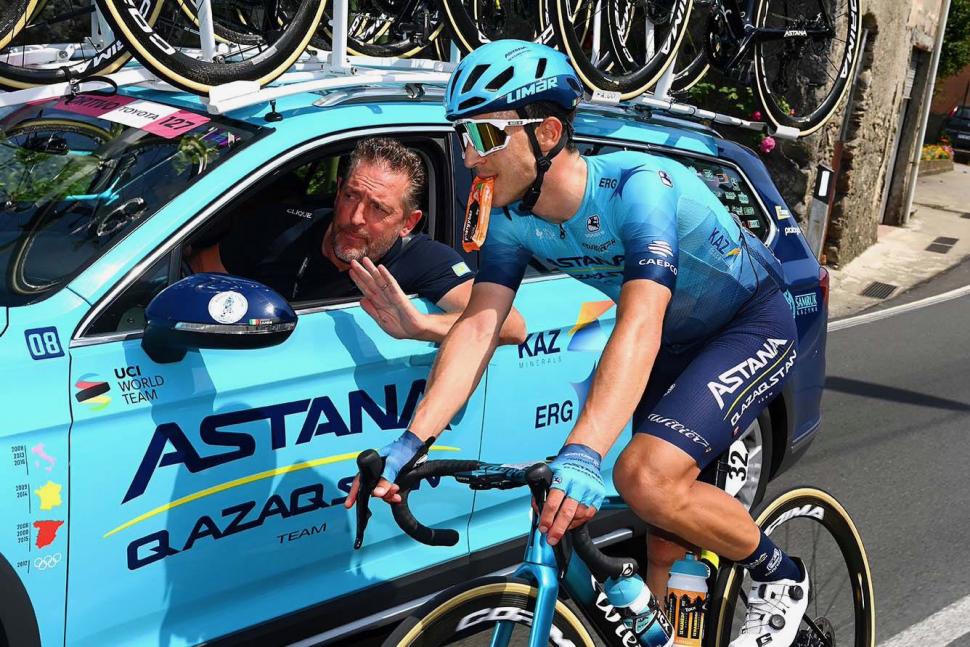
How do Tour de France riders eat on the move?
First Published Jul 12, 2022
Updated 12th July 2022
Riding the Tour de France requires a lot of calories: 5,000, 6,000 or even more on every stage. It takes a whole lot of snacks to stay on top of that kind of energy expenditure. A mid-ride Snickers bar and a can of Coke really won't cut it, so how do the pro riders get sufficient nutrition on board?
What do pro riders eat on a stage of the Tour de France?
A pro rider will eat mostly carbohydrates during a stage of the Tour de France. And we're talking about a whole lot of carbs.
On a typical race day, a pro rider will have a substantial breakfast: something like porridge followed by eggs and avocado on toast, and maybe some fruit.
Then it’s off to the start line with pockets packed full of low-bulk snacks.
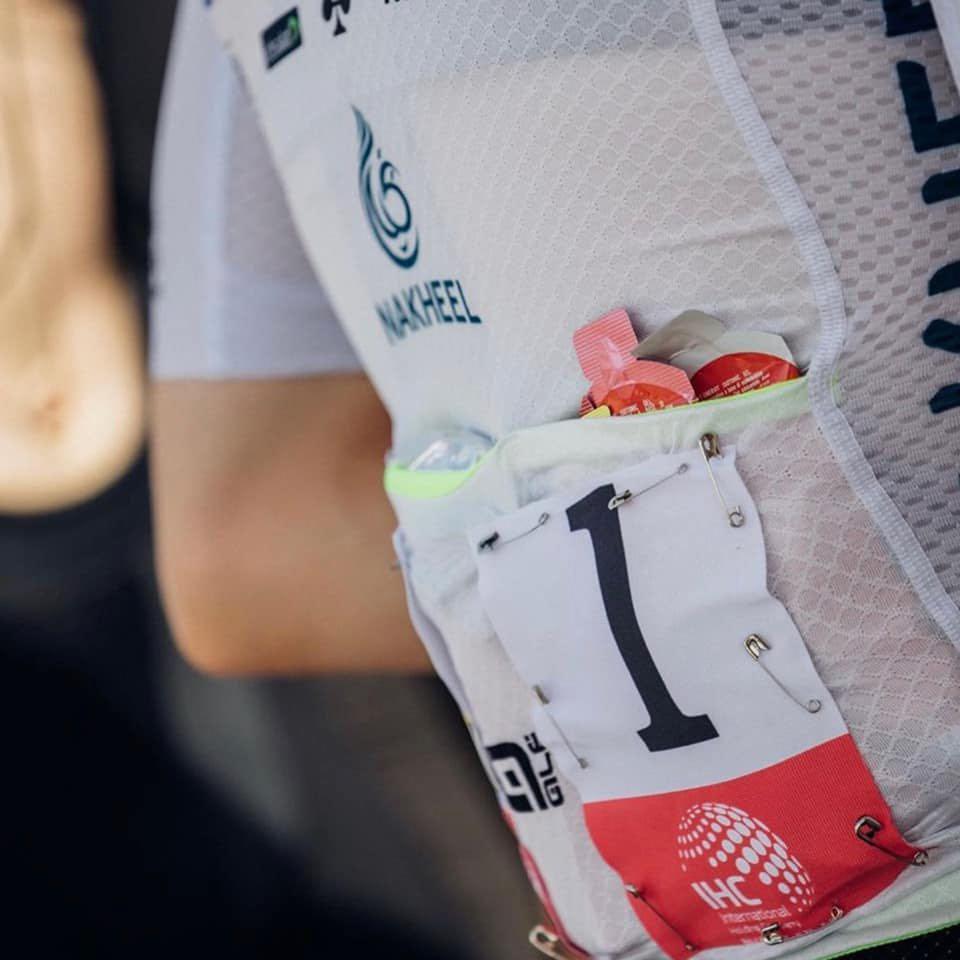
Let's say, for example, that today's stage is going to be fairly straightforward, with a breakaway expected to get away from the main field early on. It’s a flat stage with a category 2 climb to finish and our pro rider needs to keep the team leader in a good position for the start of the ascent.
Snacking starts early with a tasty rice cake once the breakaway riders have raced off up the road. This is a small cube of pudding rice with some flavouring – like a chopped-up date or apricot. They take a little bit of chewing, so it’s best to get these down when the going is easy.
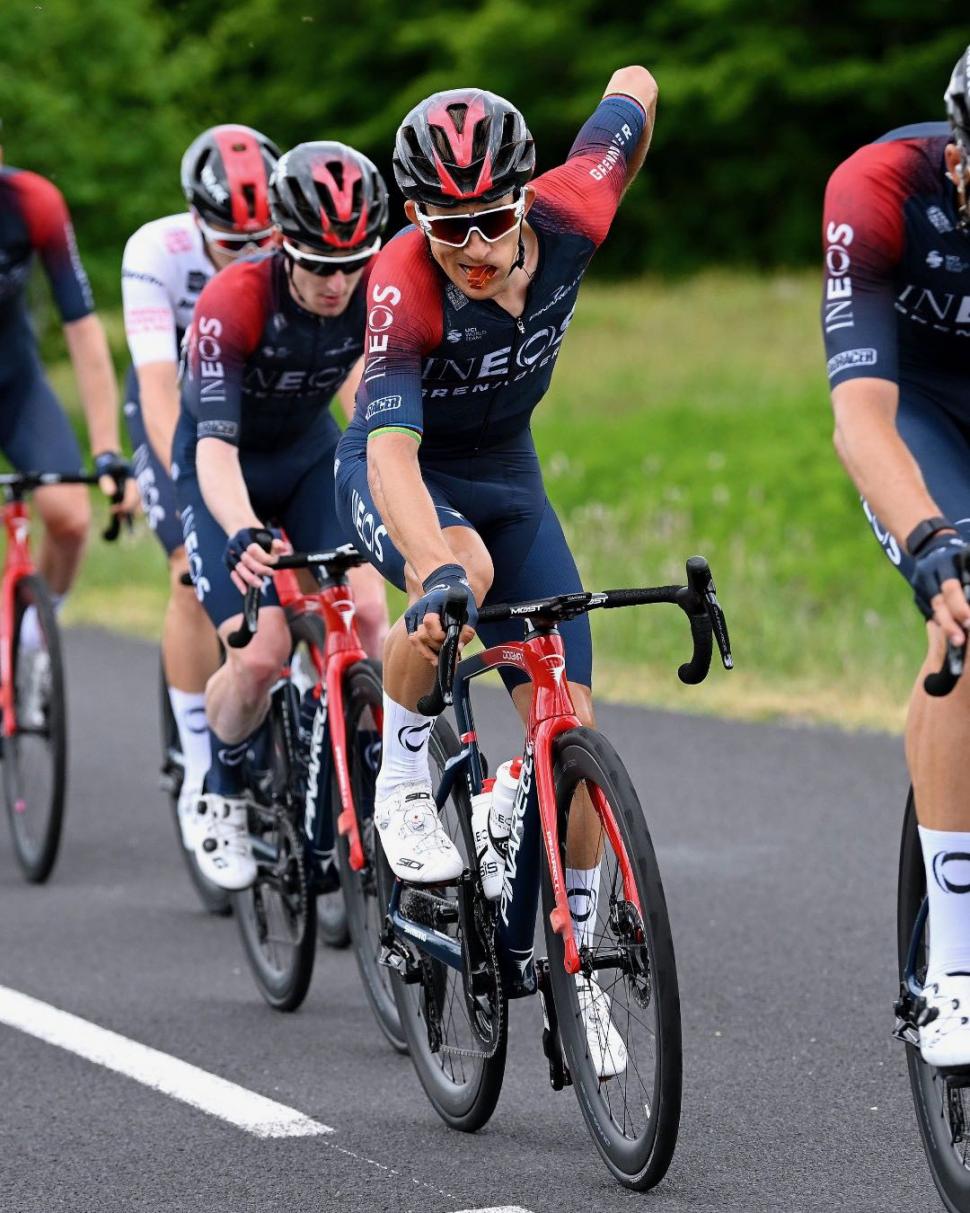
As the race meanders its way through the day, our pro friend fishes an energy bar out of his back pocket. These are great for keeping energy levels topped up because they're jam-packed with carbs. One energy bar for every hour's riding should be enough.
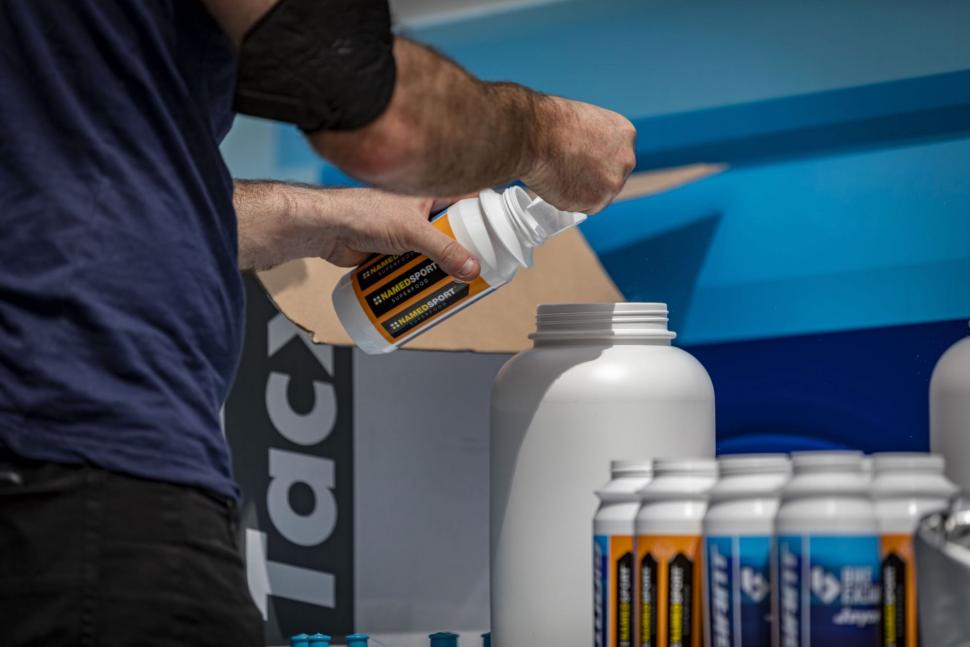
Washing all of this down is some flavoured energy drink. As well as being crammed with carbs, the drink might contain key electrolytes (salts) to replace those that our rider will be losing as he sweats in hot temperatures.
Our pro will have two bottles on his bike and perhaps collect another from the team car as he returns to the peloton after answering a call of nature. He'll get through a 500ml bottle every hour.
The supply chain
Running out of snacks is annoying for most of us, but when you’ve got a long way to ride – perhaps at a very high intensity – it can be a major problem... and a very costly one when you consider the amount invested in top-level cycling. This is why a team works hard to make sure that its leader and support riders are topped up with fuel and are never left hanging.
There are a few ways that teams get food and drink to their riders. The easiest way is for a team leader to have another rider drop back to the team car and collect some. After the leader places their order, the teammate falls to the back of the peloton, sticks their hand in the air to signal to the race director’s car that they require service, and the relevant team car is called up to assist.
In the meantime, the teammate can radio the team car to let those inside know what's needed so that everything can be ready.
Once loaded up with bottles and energy gels or bars, the rider will make their way back through the peloton in order to distribute the food and drink.
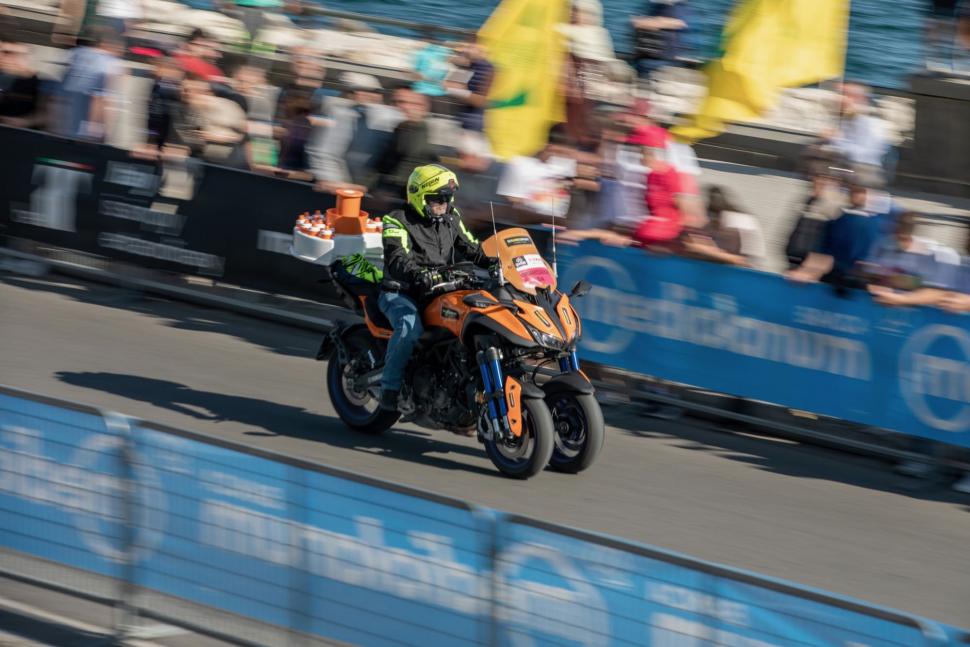
A rider can carry a lot of bottles – usually at least eight inside their jersey. If there isn’t much room to move through the bunch then they will shout “service” so that other riders can give them some room.
Providing food and drink for teammates is a tiring job that takes longer than you’d think. There were 176 starters in this year's Tour de France. Negotiating your way through that lot isn't easy. Although you might not notice it on TV, a rider could be moving back and forth almost non-stop on a hot day
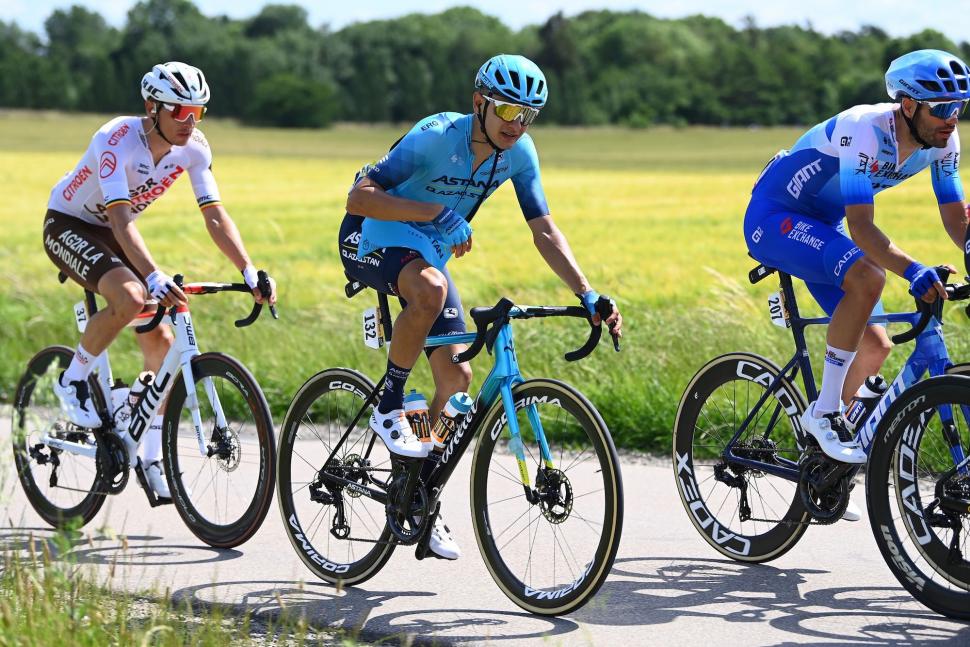
A musette is a lightweight shoulder bag that’s filled with food and drink, and it’s a great way to hand riders their nutrition without the need for anyone to go back to the team car. There might be water bottles, energy bars, gels, fruit, cake, and so on tucked away in the musette.
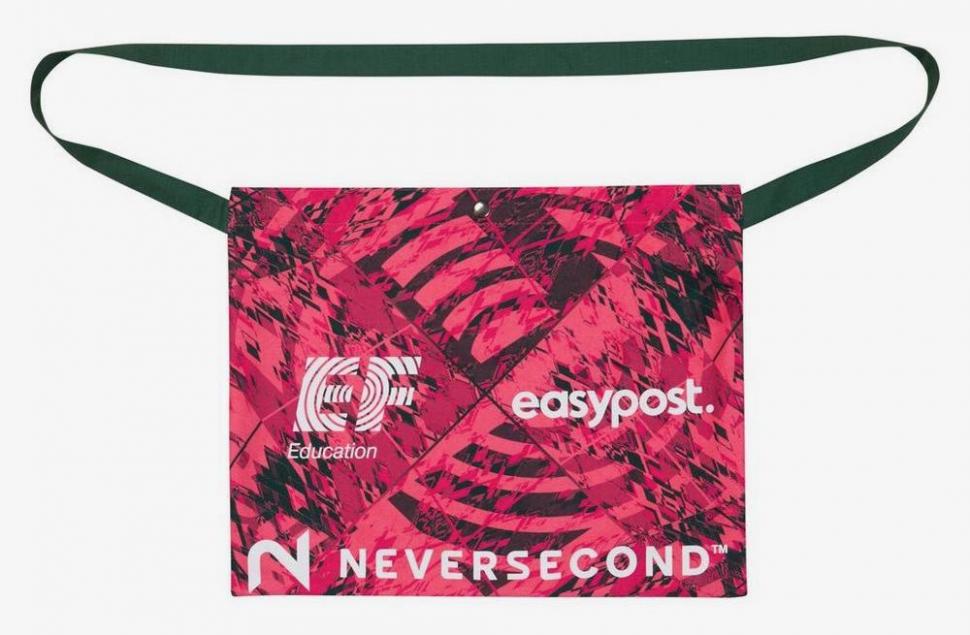
Soigneurs (staff who do loads of different jobs within a team) stand on the side of the road in designated feed zones with musettes held aloft. A rider grabs a musette on the fly and slings it over their shoulder, unpacking everything into their pockets and onto the bike as they ride along.
Although soigneurs wear team colours – maybe a jersey and a hat – and the musettes carry the relevant team’s logo, it can still be a chaotic process when you have a large peloton. It's a bit like dozens and dozens of people trying to pick up their orders at a drive-thru McDonald’s at exactly the same time.
Each stage has designated feeding zones. There’s a zone for waste just before and just after the feeding zone so that riders can ditch their rubbish, and another just before the final 20km (12.5 miles) of the stage begins.
Feeding rules
Deceuninck–Quick-Step’s Julian Alaphilippe was given a 20-second time penalty for taking a water bottle when it wasn’t permitted in the 2020 Tour de France, costing him the race lead. Adam Yates, who was four seconds behind Alaphilippe at the start of the day, took the yellow jersey as a direct result.
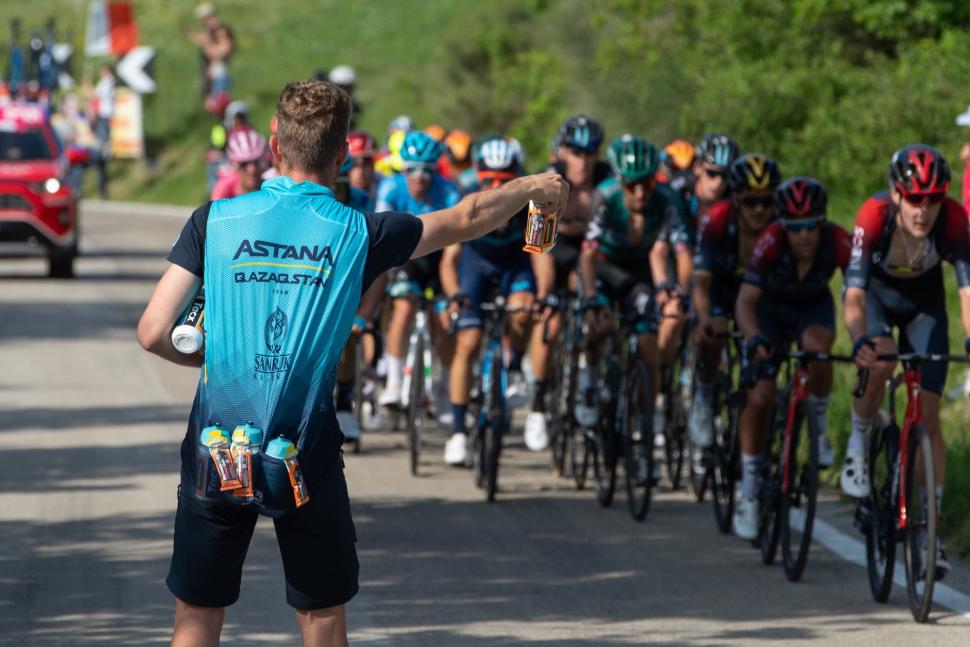
UCI Cycling Regulations say:
2.3.027 All feeding (from a car and on foot) is strictly forbidden:
during the 30 first and last 20 kilometres;
- in the last kilometre before a sprint counting for a secondary classification (points classification, king of mountain classification or others), bonus sprint, feeding zone;
- in the 500 meters after a sprint counting for a secondary classification (points classification, king of mountain classification or others), bonus sprint, feeding zone;
- on descents of mountains listed on the mountain classification;
- in any other area specified by the organiser or the commissaires panel.
Alaphilippe was given a bottle with about 17km (11 miles) to the finish, hence the penalty. Rules are rules.
Back in the 2013 Tour de France, Chris Froome sent teammate Richie Porte back to the team car to fetch a gel even though they were well within the final 20km of stage 18, because he was in danger of cracking before the line. Froome was aware that he was likely to be sanctioned as a result, but figured it was better than running out of energy which could have affected his time on the stage and even his performance on subsequent days.
Both Froome and Porte were given 20-second penalties, but Froome won the race overall by more than four minutes so it was probably best to play it safe and take both the gel and the sanction.
Help us to fund our site
We’ve noticed you’re using an ad blocker. If you like road.cc, but you don’t like ads, please consider subscribing to the site to support us directly. As a subscriber you can read road.cc ad-free, from as little as £1.99.
If you don’t want to subscribe, please turn your ad blocker off. The revenue from adverts helps to fund our site.
Help us to bring you the best cycling content
If you’ve enjoyed this article, then please consider subscribing to road.cc from as little as £1.99. Our mission is to bring you all the news that’s relevant to you as a cyclist, independent reviews, impartial buying advice and more. Your subscription will help us to do more.
Add new comment

I'd imagine by putting food into their mouths.
- Log in or register to post comments
There's an app for that - https://road.cc/content/review/eatmyride-app-fanatic-subscription-294271
This doesn't answer the burning question. Pee'ing and Pooping.....
If pee-ing is a burning question, you should see your doctor.
Latest Comments
That junction looks like absolute hell to drive through! You have to wait for the vehicle traffic, the cycle traffic and the pedestrian traffic to...
If bikes have to be booked on the train then - unless they paid cash at the ticket office - Avanti should have details of who else had a bike on...
A lot of those "decals" were actually done with an airbrush.
Pfft.......
Cry some more, carbrains.
It's £5500 with Ultregra Di2 & 36mm Shimano carbon wheels. Sram Force etap is the same price with Zipp wheelset. Same frame as the pro level...
Come on Kentonline we're 2 weeks past April Fools Day, so traders actively blocking their own High Street to cars, yeah right...
Motorists behaving like this should have their cars impounded and be forced to ride a bike for a month. A second offence and the car gets crushed!
I spent a month based in San Fran staying with a friend who lived there. Majority of people seemed to use public transport and walk tbh which was...
Fascinating stuff.
Riders fight against punishment for throwing bottles to roadside fans
CPA rider’s association hopes for rule change at April meeting of Professional Cycling Council

The CPA rider’s association is leading a push by riders to change the new strict UCI rules on the disposal of bottles after Michael Schär ( AG2R Citroën Team ) and Letizia Borghesi (Aromitalia-Basso Bikes-Vaiano) were disqualified from the Tour of Flanders for throwing a bidon to roadside fans.
The strict rules on the disposal of bidons was introduced on April 1 as part of wider rule changes on littering and safety that included bans on supertuck positions, improvements to finish area barriers and the introduction of a UCI Safety Manager and Event Safety Manager for each race.
Riders were critical of the banning of the different aero tuck positions but have generally respected the new rule. However, the bidon rule has proved to be far more controversial, with riders disagreeing that throwing bidons to fans can be dangerous or is considered littering, instead suggesting that it is a longstanding part of the traditions of the sport. They believe it is unfair to disqualify a rider from a race simply for throwing a bidon to fans, maintaining that a compromise solution can be found that distinguishes between blatant and repeated littering and giving bidons to roadside fans.
Riders to face red card-type punishment for safety, littering violations Tour of Flanders: Kasper Asgreen takes upset victory over Van der Poel Michael Schär kicked out of Tour of Flanders for littering
Michael Schär: A bottle reminded me of my cycling dream every day
Cyclingnews understands that the CPA rider association held an online meeting on Tuesday evening after consulting their representatives in the teams, and they have written to the UCI asking for a review of the current strict bidon rules. The CPA believes the riders have the support of the AIGCP teams association.
There appears to be a real risk that riders could decide to protest in some way if the UCI does not listen to their request to change and finesse the rules.
Confusion and late rule changes
Cyclingnews has discovered that the the bidon rule was changed after it was first discussed during the winter in a series of stakeholder meetings, which Matteo Trentin and Philippe Gilbert attended to represent the riders. In early February, the sport's stakeholders (UCI, race organisers, teams and riders representatives) agreed to disqualify riders in the final vote during a Professional Cycling Council meeting.
“When we spoke about it we reached an agreement that it was wrong to throw bidons in places they couldn’t be collected but I recall we said yes to giving them to the fans,” Trentin told Italian website BiciPro .
Get The Leadout Newsletter
The latest race content, interviews, features, reviews and expert buying guides, direct to your inbox!
“Instead our representatives met with the teams and banned giving bidons to the public and also introduced severe punishment. I’m really angry about it. Whoever was there didn’t say a word.”
Trentin seemed to be pointing the finger at CPA president Gianni Bugno, who didn’t attend the working groups on safety but voted to accept the rules at the PCC meeting in February, apparently under pressure to approve the whole package of new littering and safety rules in one vote.
It seems Bugno and CPA Vice President Pascal Chanteur of the French UNCP riders association didn't understand the wider consequences of the bidon rule and how it would be interpreted by riders.
“When we spoke about bidons and the public, and disqualifications were included, I voted in favour,” Bugno admitted to BiciPro .
“I was convinced by their explanations regarding safety. What happens if a rider throws a bidon and a child goes into the road to get it and they’re hit by a photographer’s motorbike? Disqualification is a severe punishment but it’s a way to change bad habits.
“Riders can give away bidons when they stop or slow and pass it to a child, they shouldn’t throw it. I know riders are against just throwing bidons away, but they can’t create any danger.”
Trentin dismissed that throwing bidons towards children and crowds could be dangerous. The idea of stopping during a race to pass a bidon to a child seems impractical.
“The problem is that the people who draw up the rules don’t understand cycling. There’s never been the kind of accident they talk about, while it often happens that we share decisions and then the opposite happens,” Trentin said.
The CPA hopes to convince the UCI to modify the bidon rule at the next CCP meeting on April 14.
They hope a compromise is found that punishes indiscriminate littering by throwing bidons into fields but allows bidons to be thrown specifically towards fans, perhaps in special designated areas that are considered safe. The CPA also hopes to create a level of punishment that only leads to disqualifciation for multiple offenders.
“We’ll try to intervene on sanctions at the PCC meeting on April 14. Unfortunately, the race judges have to apply the rules they are given, it’s not easy even for them,” Bugno said.
Staf Scheirlinckx of the Belgian Professional Cycling Association (BPCA) called for clarity and more detail to the rules.
“Water bottles can no longer just be thrown away in nature and that seems logical to me" Scheirlinckx told Sporza , while suggesting Schär’s disqualification was too severe.
"Suppose a rider in the second stage of the Tour de France has to throw away or drop a water bottle due to a steering error and therefore risks exclusion, that goes too far.
"But we shouldn't minimize the incident either, the environment is also very important. There is just too much confusion, there should be a clearer description of the rules and an adjustment of the penalties."
The CPA hope the UCI will agree to a dialogue and so ease the tension between riders and the sport’s governing body.
However, the UCI seems unwilling to reopen the debate on bidons.
“The plan asks everyone to behave in an exemplary manner, both for safety and for the protection of the environment and the image of our sport, in particular with regard to the younger generation and the general public,” the UCI told Cyclingnews in a statement.
“We firmly believe that these measures, which in some cases require changes in attitudes, will contribute to making cycling the sport of the 21st century."

Thank you for reading 5 articles in the past 30 days*
Join now for unlimited access
Enjoy your first month for just £1 / $1 / €1
*Read any 5 articles for free in each 30-day period, this automatically resets
After your trial you will be billed £4.99 $7.99 €5.99 per month, cancel anytime. Or sign up for one year for just £49 $79 €59

Try your first month for just £1 / $1 / €1

Stephen is the most experienced member of the Cyclingnews team, having reported on professional cycling since 1994. He has been Head of News at Cyclingnews since 2022, before which he held the position of European editor since 2012 and previously worked for Reuters , Shift Active Media , and CyclingWeekly , among other publications.
A Sunday in Hell - Paris-Roubaix 2024 gallery
Luka Mezgec on his 140km breakaway with Tadej Pogacar, Grand Tour doubles and leading out Caleb Ewan
MTB World Cup Mairiporã – Christopher Blevins captures XCO win in opening round
Most Popular
Discarding of bottles and waste: the UCI adapts is rules for the Tour de France and the rest of 2021
The Union Cycliste Internationale (UCI) has decided to extend, with a few minor technical adjustments, the rules covering the discarding of bottles and waste that came into force at the 11th stage of the Giro d’Italia and which are applicable to all events on the UCI Road International Calendar.
The adjusted rules will be applicable from the start of La Course by le Tour de France and the Tour de France (26 June) until the end of 2021. An assessment will be carried out at the end of the season, with all implicated parties, with a view to potential new adjustments for 2022.
The modifications adopted were the subject of a discussion during a meeting – organised by videoconference – between representatives of the UCI, the AIOCC (Association Internationale des Groupes Cyclistes Professionnels), the AIGCP (Association Internationale des Groupes Cyclistes Professionnels), UNIO (the association of women’s teams), the CPA (Cyclistes Professionnels Associés) and CPA Women.
The rule stating that riders will not be sanctioned for giving bottles to spectators in climbs situated within the final 50 kilometres of events or stages has been renewed. However, the UCI reiterates that riders must ensure that the throwing of their bottle towards the public does not present any danger, either to spectators or to the riders. In the case of non-compliance with these conditions, the sanctions will be maintained in accordance with the UCI Regulations currently in force.
Moreover, as announced on 18 March, in specific race situations which might lead riders to dispose of bottles or waste outside the zones provided for this purpose (for example when echelons are formed), which is forbidden, the Commissaires’ Panel, as authorised by the UCI regulations in force, shall have the possibility of not sanctioning the rider if it deems the situation exceptional.
Furthermore, in the case of a heatwave or during certain long flat stages, measures may be put in place by the President of the Commissaires’ Panel as an exception and in consultation with the organiser. These measures will be announced in the organiser’s daily communiqué and via radio-tour.
These adjustments to the rules in force were made because of the UCI’s desire to continually draw on information and experiences gathered on the ground with implicated parties, to ensure the rules are coherent and in the interests of rider safety.
These special provisions are published on the Regulations page of the UCI website.
Tour de France: 10 Wacky Rules of the Greatest Cycling Race in the World
Share this:.
- Click to share on Facebook (Opens in new window)
- Click to email a link to a friend (Opens in new window)

The Tour de France often looks like a hectic free-for-all as the tightly packed peloton flies through the French countryside.
Riders must constantly jockey for position with the athletes around them while trying to gain every advantage possible to win. How the tour works can be a bit tough to understand in its own right.
But in addition to the complicated race format, the Union Cycliste Internationale (UCI), which regulates the race, has precise rules that all riders and team members must follow. Some restrictions, like not cutting the course, seem obvious. Others seem arbitrary, unnecessary, or downright weird.
Here are a few of the strangest rules Tour de France riders must follow.
No Littering in the Tour de France
Bikes are good for the environment, right? So races should be, too. Per UCI guidelines, athletes face hefty fines and point deductions if they toss gel packaging, bottles, clothing, or trash outside designated zones outlined by race officials.
Wout van Aert has already received one such fine during this year’s Tour de France. The UCI levies punishment for littering when an offense meets the following criteria:
“*(A) Rider or team staff disposing of waste or other objects outside of litter zones, or not returned to team or organisation staff, not collected by team staff, thrown at a spectator. Disposing waste or other objects in a careless or dangerous manner (e.g., bottle or other object remaining or bouncing back on the road, thrown directly or with excessive force at spectator, causing dangerous manoeuvre by other rider or vehicle, causing spectator to move onto the road).”
The first infraction amounts to roughly a $500 fine and a 25-point deduction from the UCI rankings. A second infraction comes with a $1,000 fine and a 50-point deduction in UCI rankings. A third offense is a bit nastier. It results in a $1,500 fine, a 75-point deduction in UCI rankings, and elimination or disqualification from the race.

No Pushes From Spectators
The UCI prohibits pushing off of cars, motorcycles, or riders. It also prohibits riders and spectators from pushing other riders.
Fans frequently run next to riders to offer support, particularly during grueling climbs. But a push can have severe consequences for a rider, including a 20% penalty in the points classification for sprints (green jersey) or in King of Mountain (KOM) classifications (polka-dot jersey) and a 10-second penalty per infraction.
No Spraying Liquid From Cars
Sometimes, stages get hot. It’s common to see riders spraying themselves with their bottles to get their core temperature down.
The UCI has no problem with riders giving themselves a refreshing spray, but if someone gives them one from a team car, that is just a bridge too far.
The UCI fines drivers about $200 per infraction for giving riders a spray on the course.
No Public Urination or Undressing
If you’re on a bike for several hours ingesting enough liquid to float Noah’s ark, nature is going to call. It’s normal for riders at the Tour de France and other grand tours to stop to relieve themselves during portions of races where they still have time to catch up with the peloton.
According to UCI rules, however, this is a no-no. If race officials identify a rider urinating, they can levy a fine of anywhere from about $200 to $500.
Riders often stop in large packs to relieve themselves simultaneously, so race officials can’t get them all.
No Assistance From Other Teams
If you wonder whether cyclists competing in grand tours have any honor, sometimes it just isn’t allowed. Per UCI rules, riders cannot receive assistance from other teams during races. This rule comes with a significant punishment as well. Riders can be penalized anywhere from 2 to 10 minutes per infraction, with a roughly $500 fine.
Two minutes is a massive margin in a stage race like the Tour de France. That kind of deficit could be a nail in the coffin of a rider, even if they are at the front of the pack.
Richie Porte learned this lesson the hard way in 2015 when the UCI hit him with a $200 fine and a 2-minute penalty during the Giro d’Italia for accepting a wheel from a racer on another team in the last bit of Stage 10 after he blew a tire. He later abandoned the race.
No Personal Clothing During Podium Obligations in the Tour de France
Most cyclists are ready to strip out of their tight-fitting Lycra as soon as possible when the ride is over. Tour de France cyclists are not so lucky.
The UCI requires riders to wear their complete racing kit during podium obligations, including each day’s sign-in and the team presentation ceremony. That means some riders will stay in their tight racing outfit for long outside the race, before and after.
Wearing the wrong clothing to the podium can result in about a $500 fine for a rider or sports director.

No Feeding Outside of Designated Zones
Riders need to pump their bodies full of nutrition throughout races to remain competitive, but they are not allowed to feed (receive food) whenever they want. Feeds to riders must occur in designated areas.
The UCI penalizes riders who feed in the first 30 km and last 20 km of stage races, including the Tour de France. Those caught feeding in the first stretch face about a $200 fine. Those caught in the last stretch pick up the same fine and a 20-second time penalty.
Any more infractions come with about a $1,000 fine per infraction.
No Forearms on Handlebars, No ‘Super-Tuck’ Aero Position
Until 2021, riders would charge into descents in a “super-tuck” position, dropping down to the top tube of their bike to maximize aerodynamics. To make riding safer, the UCI banned the super tuck last year while also forbidding riders from resting their forearms on their handlebars to achieve a time-trial-like position on a standard road bike.
The new rules called on riders to stay on their bikes as designers intended. Does it make racing safer? Maybe?
Sock Height in the Tour de France
Yep. The UCI will come for your socks. The UCI in 2018 noted that riders’ socks must not extend more than halfway up a rider’s shin.
Here’s how they put it: “Socks and overshoes used in competition may not rise above the height defined by half the distance between the middle of the lateral malleolus and the middle of the fibula head.”
The idea is to limit riders’ aerodynamic advantage from their footwear. But socks are pretty low on the priority list if this year’s helmets indicate how riders try to find the perfect aero system.
No Indecent Behavior Toward Spectators
The UCI wants spectators and riders to get along. So, any form of “assault, intimidation, insults, threats, improper conduct (including pulling the jersey or saddle of another rider, blow with the helmet, knee, elbow, shoulder, foot or hand, etc.), or behaviour is indecent, or that endangers others” is expressly forbidden.
Riders face fines from $200 to $2,000 for any infraction against another rider or spectator.

Mark Wilson is a freelance journalist for GearJunkie and BikeRumor. Mark has been writing about cycling, climbing, outdoor events and gear for more than a year. Before that, he spent more than a decade as a journalist at major daily newspapers in Texas covering crime, public safety and local government. Mark spent every free moment during that time carving up singletrack and gravel, or climbing with friends and family in Texas, Colorado and Mexico. Based in Texas, Mark is always looking for new trails, crags and gear to help navigate the outdoors. As a new dad, he is particularly interested in learning how to share his love of the outdoors with his son.
Follow Us On
Subscribe Now
Get adventure news and gear reviews in your inbox!
Join Our GearJunkie Newsletter
Gear Top Stories Deals
6 Things Tour De France Cyclists Do That You Don't
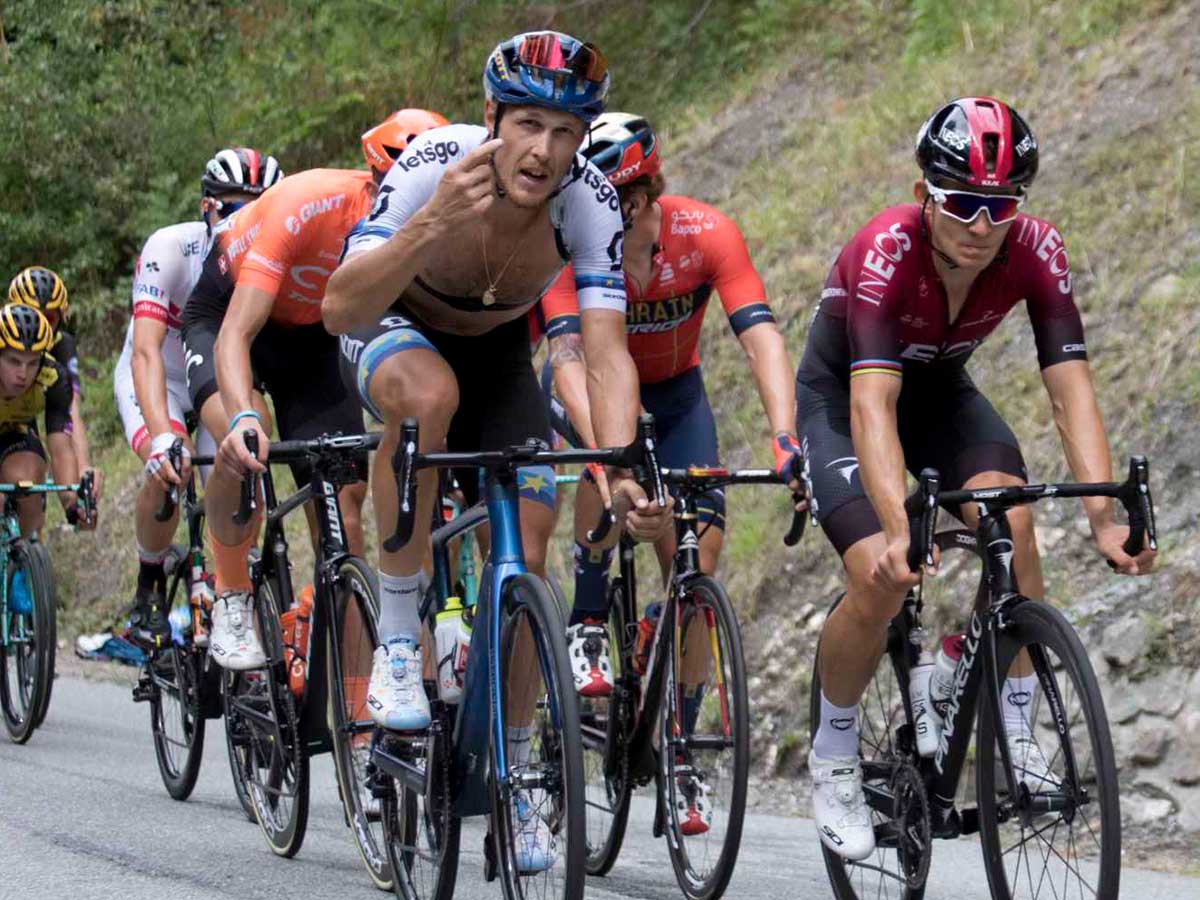
Published: June 2021
Cycling’s biggest race, the Tour de France, is upon us and that means three weeks of watching the world’s very best strut their stuff. It takes a lot to be a professional cyclist though. As well as the obvious years of training and dedication that go into just turning pro, there are a few other things that Tour de France cyclists do that amateurs don’t.
Chucking water bottles away
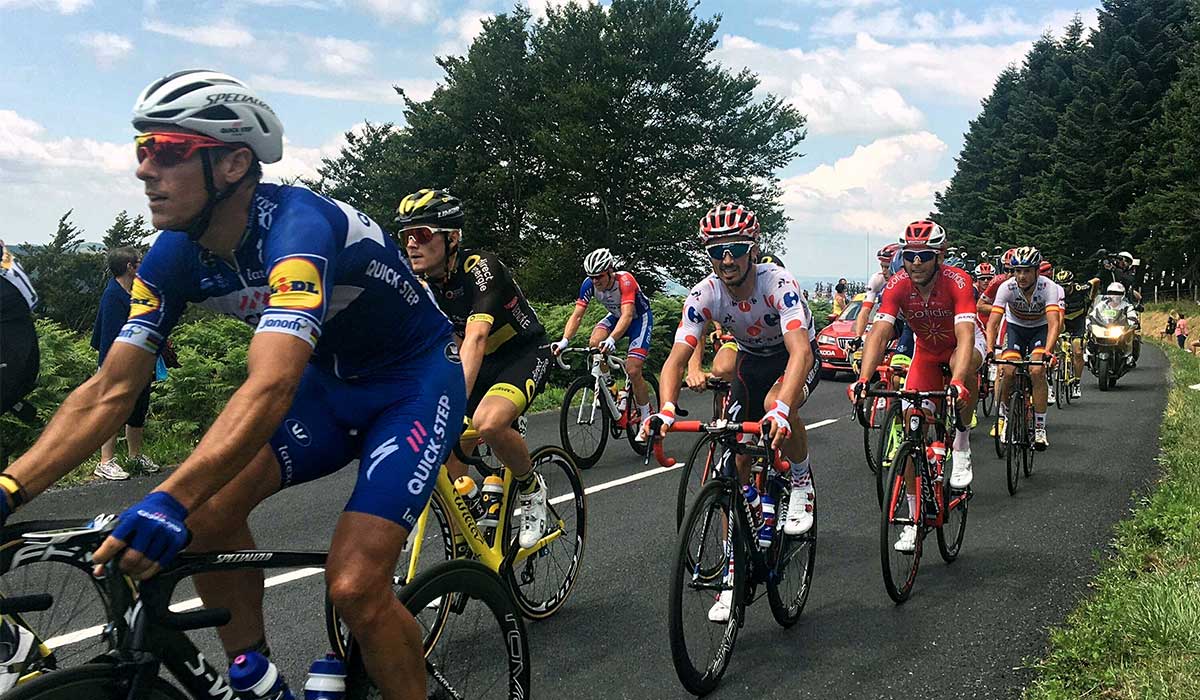
When the pace starts to ramp up in anticipation of the crucial part of a stage, you will see riders tossing their water bottles from their bikes. Although a contentious issue over the past few months, these often double up as souvenirs for lucky roadside fans. But the reason they’re thrown away is simply because every gram matters in the Tour de France. Squeezing out the contents of a bottle or ditching it altogether shaves some valuable weight from their bikes which could then make a difference on a climb or final sprint. As everyday cyclists, we can’t do this as we need that fluid for fuel and unlike professional teams, we can’t afford to grab a new water bottle every time we leave the house.
Littering… in certain places
You will also see riders emptying their pockets of gel and food wrappers at certain points of each stage. Fear not, the riders aren’t showing their displeasure for the local council by mass littering. No, they do it all at the same time over the length of a kilometre in a designated zone so that the rubbish can be easily collected rather than being strewn across the pristine French countryside. It’s a fair compromise reached between a race keen to protect the local environment and riders who don’t want to carry their sticky trash all day. ATTENTION! (Yes, we feel like this should be in bold) as everyday cyclists, we should not litter at any point on our rides. Find a bin or take your wrappers home with you and dispose of them there .
Lunch is served
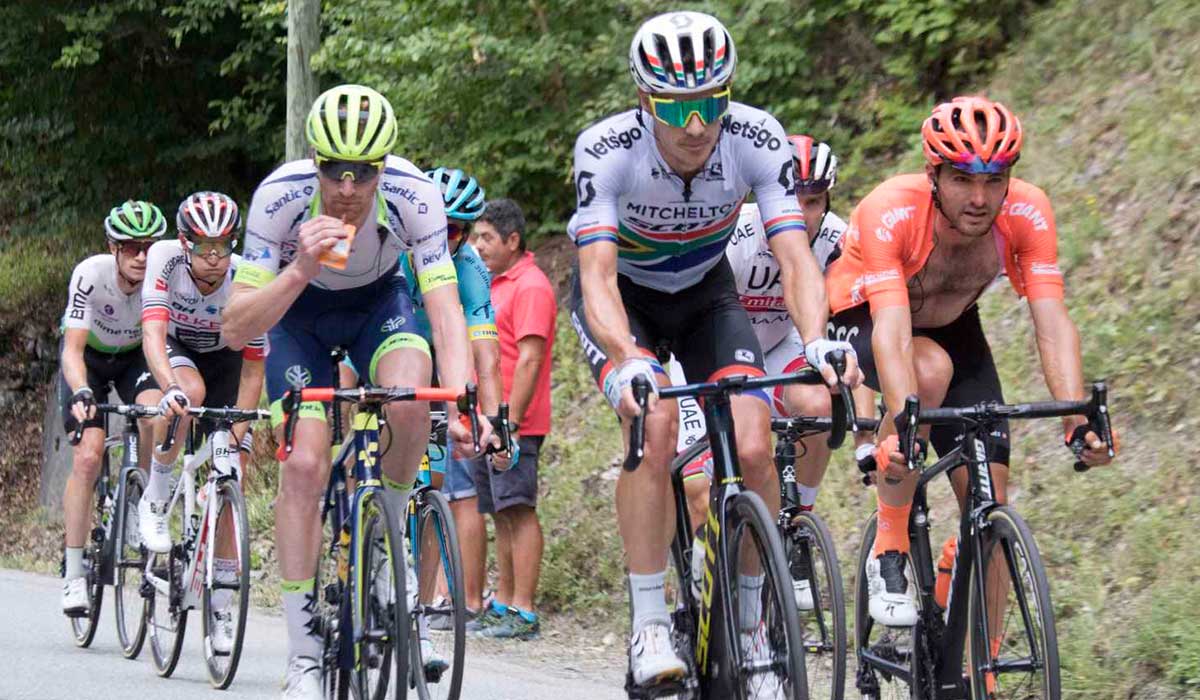
Another designated area on each stage is the feed zone. Tour de France cyclists burn up to 7,000 calories a day so replenishing these stocks is a huge deal. Race nutrition is one of the most important considerations for any rider hoping to perform consistently over three weeks. Therefore, it’s crucial a rider doesn’t skip lunch as the effects of a calorie deficit could be race ending. The peloton get their mid-stage ‘meal’ via a soigneur (or helper) positioned in the feed zone or zones, depending on the length of the stage. The team helper will stand by the side of the road and dangle a musette bag full of lunch in front of their rider for them to then grab hold of. This trust exercise sounds simple enough but can be nail-biting to watch. It’s probably best not to try this with a friend – just take food with you or purchase it along the way.
Relieving oneself
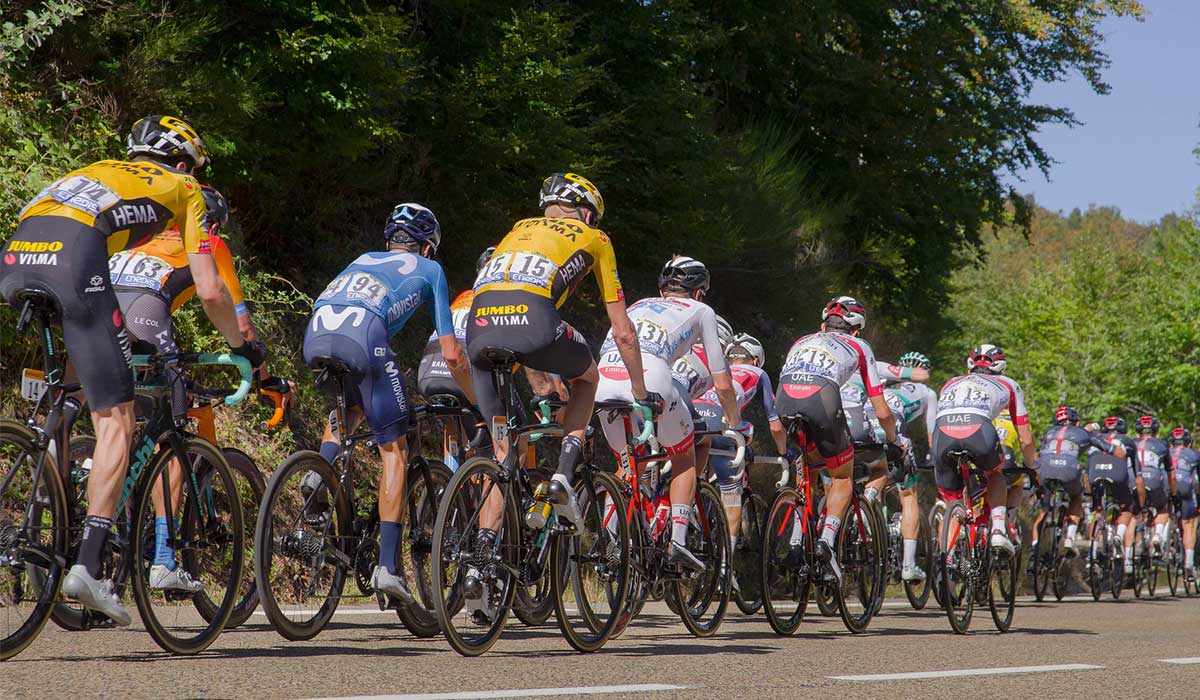
Possibly one of the most common questions for professional cyclists is how you answer the call of nature when you’re racing. The most important thing is not to do it in public – a rider can incur a fine if they’re spotted. However, there is safety in numbers so if enough of the peloton need a comfort break, they will pull to the side together and relieve themselves. This mass pause is often a sign that the day's breakaway has been formed and the peloton are happy with it. Cue a flustered cameraman panning away from the side of the road and a quick jump cut to an aerial view of a beautiful chateau. We hope it’s pretty obvious that this is one pro ritual we should not replicate.
Newspapers down their jerseys

This is perhaps one of the strangest sights at the Tour de France. When cresting a mountain pass you will quite often see riders pick up a newspaper from their soigneur and stuff it down their jersey for the descent. You would have thought that with all the developments in apparel they'd not resort to such an 'olde worlde' method of wind protection. However, getting a padded jersey from your team car, putting it on while still riding, only to strip it off at the bottom of the descent is far more hassle than it’s worth. The newspaper technique is a stress-free and effective way of keeping the wind off the chest on a long descent, and it's a nice throwback to cycling of old. For casual cyclists it’s much easier to stop by the side of the road to don another layer if it gets chilly. Although do bear this one in mind in case you get caught out in a freak summer rainstorm – it might just come in handy…
Loading up their jersey with water bottles
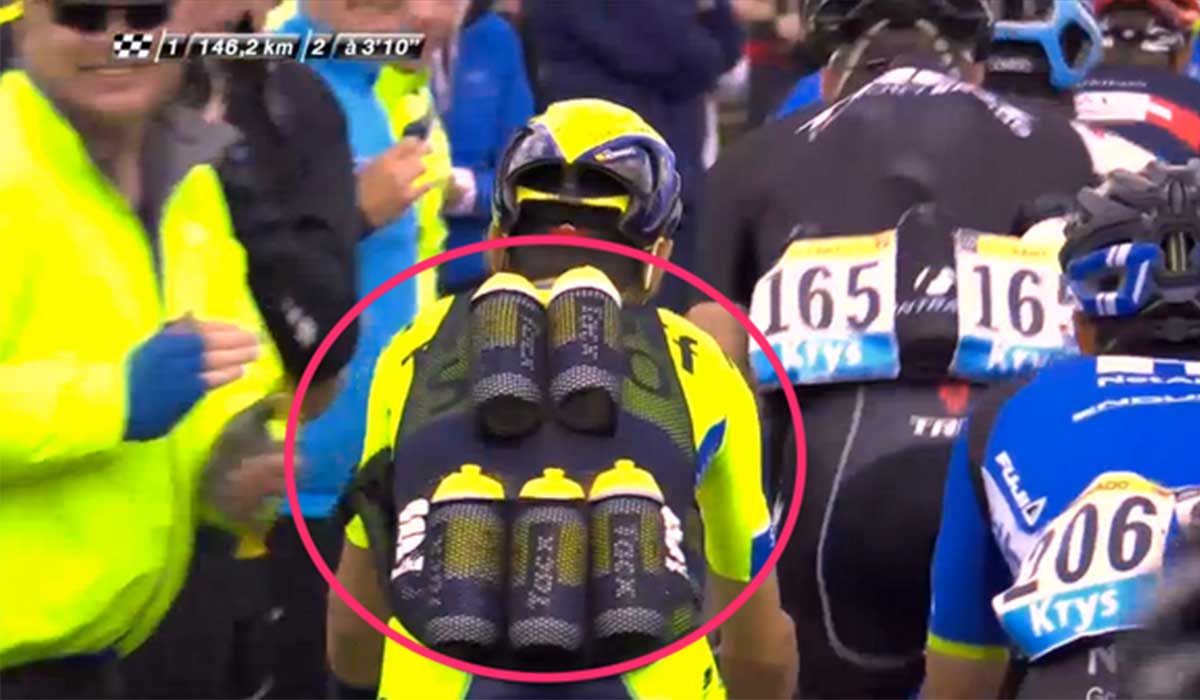
With so many riders in the peloton and dozens of team cars in the convoy, it would be chaos if every rider was constantly dropping back to collect their own water bottles. Instead, one domestique (support rider) will head back to their team car and quite literally load themselves up with bidons. They will start jamming bottles into every single little nook and cranny they can find down the back and front of their jersey. The sight of them then riding back up to their teammates looking like a lumpy Michelin man is quite something.
Pedalsure can protect you and your accessories in mass participation events and races, in cases of bike theft, personal injury, personal liability, during events and abroad. Most of what we cover you won’t find in your home insurance policies. Avoid dropping the ball on this one and follow our quick and easy quote process today.

The Tour de France Glossary
Flamme rouge ? Hors catégorie ? If you’ve ever wondered what Tour announcers are saying, we’ve got you covered.

Gear-obsessed editors choose every product we review. We may earn commission if you buy from a link. How we test gear.
But don’t worry: We’ve got you covered with this Tour de France glossary. Use it as a guide help you navigate what the commentators are saying and why.
Arrière du peloton - French for “rear of the peloton,” or those riders at the back of the main group. See: peloton.
Attack - An aggressive, high-speed jump away from other riders.
Bidon - French for “water bottle.” Riders go through several a day. While grabbing one from the team car, riders can often receive a “sticky bidon”—that is, they hold onto the bottle for a few seconds as the driver accelerates, thus towing them along and giving them a brief pull.

Blocking - Legally impeding the progress of riders in the pack to allow teammates a better chance of success (see: soft-pedal).
Blow up - To suddenly be unable to continue at the required pace due to overexertion.
Break, breakaway - A rider or group of riders who escaped the pack.
Bridge, bridge a gap - To catch up with a rider or group that has opened a lead.
Broom wagon ( voiture balai) - A van that follows the race each day, picking up riders who have dropped out and giving them a ride to the stage finish. It also signals the end of the race itself, meaning local authorities are free to open the roads to traffic.
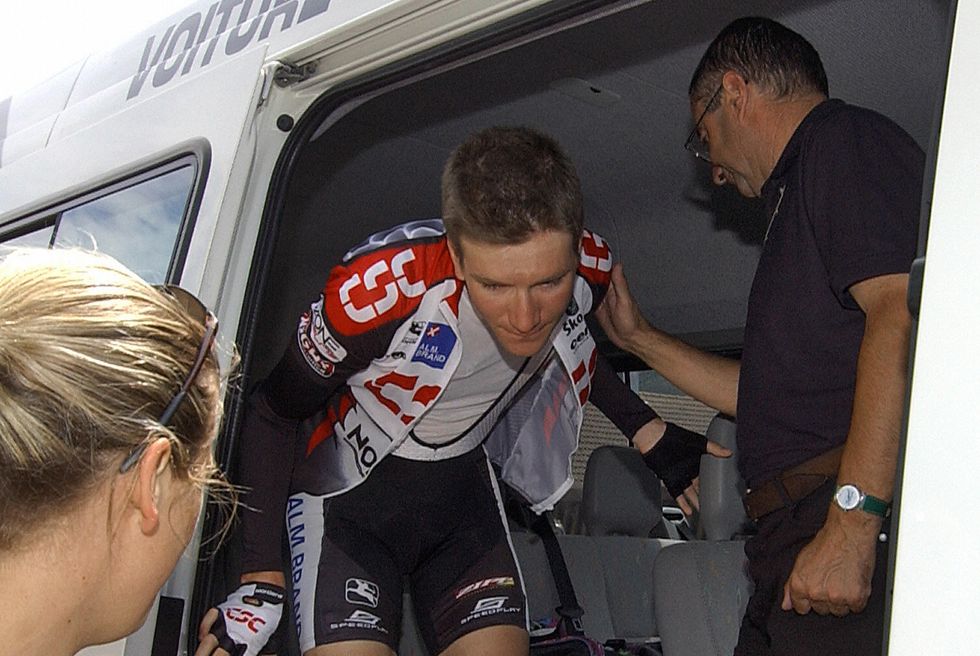
Categorized climb - Most of the Tour’s major ascents are ranked according to certain guidelines, though it’s not all set in stone. In decreasing order of difficulty, official climbs are rated 1, 2, 3, and 4, though the toughest climbs are considered “beyond category” (see: hors catégorie ).
Champs-Élysées - The famous cobbled boulevard in downtown Paris that hosts the finish of the final stage of the Tour de France. Riders make several laps of a circuit that takes them around the Arc de Triomphe, through the Place de la Concorde, and up and down both sides of the Champs.
Christian Prudhomme - A former journalist who is now the general director of the Tour de France. As head of the sport’s biggest and most important race, Prudhomme is one of the most powerful people in cycling.

Directeur sportif - A French term essentially meaning head coach. The DS is responsible for planning team strategy on each stage and throughout the overall race. He’s usually the one directly answerable to sponsors, so he also operates as PR director, chief corporate liaison, head cook, and bottle washer.
Domestique - A French term for those riders willing to sacrifice their own ambitions for the sake of their teams. Domestiques do things like grab water bottles, ride into the wind to give their leader a draft (see: drafting), or pace their leader back to the peloton in the event of a flat tire .
Doping - Originally meant in reference to blood doping, or withdrawing blood to re-inject it later on to boost red blood cell count and oxygen uptake. Now meant to include any performance-enhancing substances, most of which are banned from competitive use and only some of which are testable.
4 Aero Helmets We Love
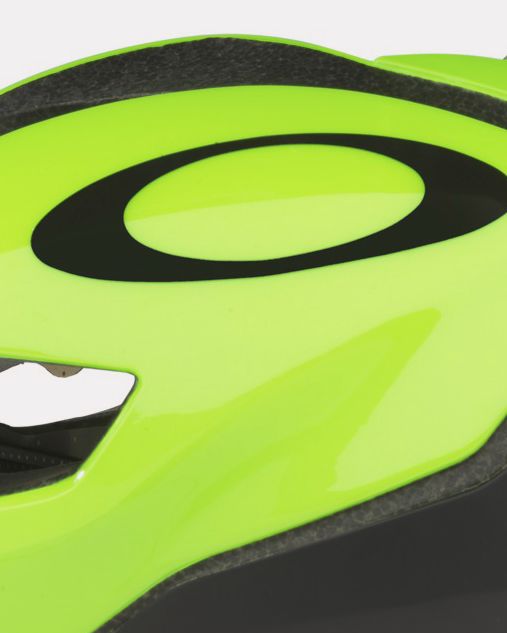
Oakley ARO5

POC Ventral
One of the breeziest aero helmets out there $290 | Competitive Cyclist Buy Now
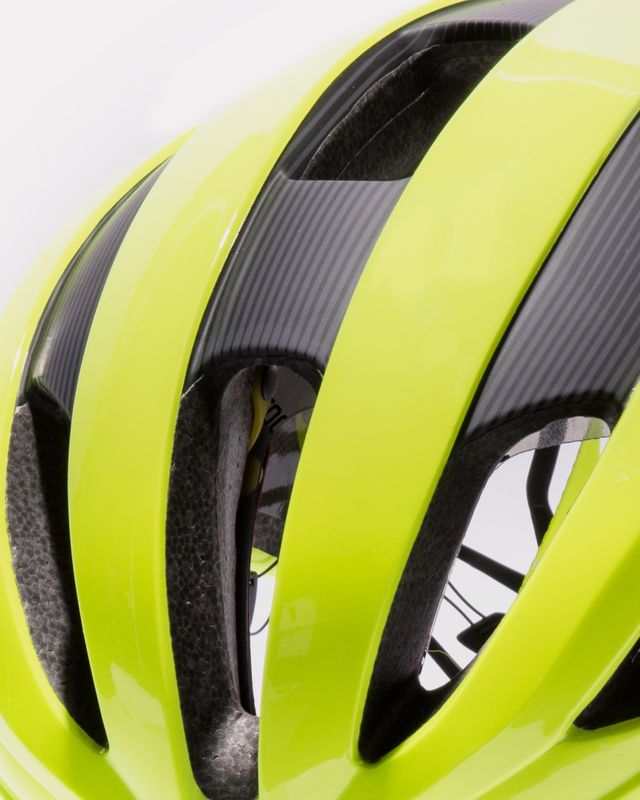
Bontrager Velocis
MIPS and Boa make it fast and safe $210 | Trek Buy Now
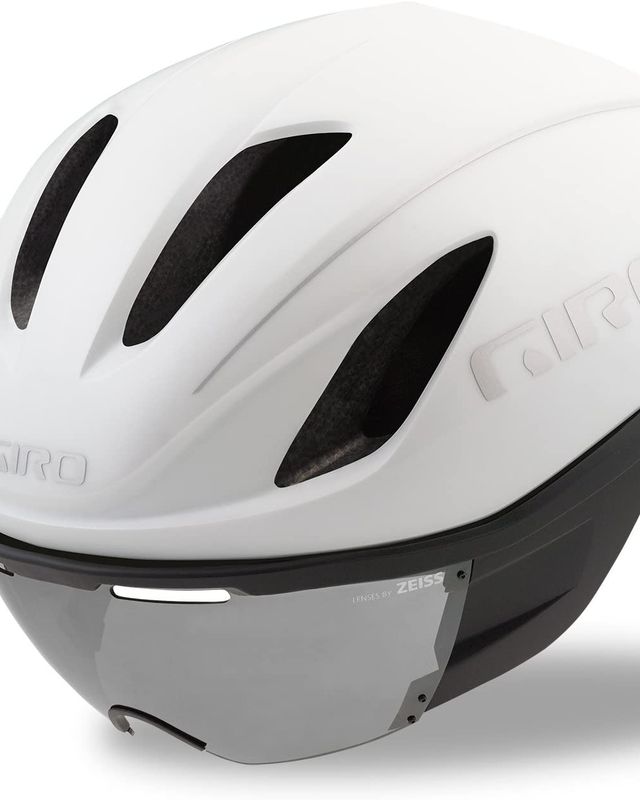
Giro Vanquish
MIPS plus a removable magnetic lens $300 | Amazon Buy Now
Drafting - Tucking in closely behind another rider to escape the wind, therefore saving you energy. See: slipstream.
Dropped - To be left behind by the rest of the field. Also known as “off the back” or “out the back.”
Echelon - A form of paceline in which following riders angle away from the leader to get maximum draft in a crosswind.
L’Équipe - A French daily newspaper covering sports. Used to be called l’Auto and serve as chief sponsor of the Tour.
Feed zones - A designated point on a stage where team personnel can pass food (often little pastries or finger sandwiches) and water bottles to riders. Huge groups of kids will wait after the feed zones because riders tend to toss away empty bottles and musettes once they’re done chowing down.
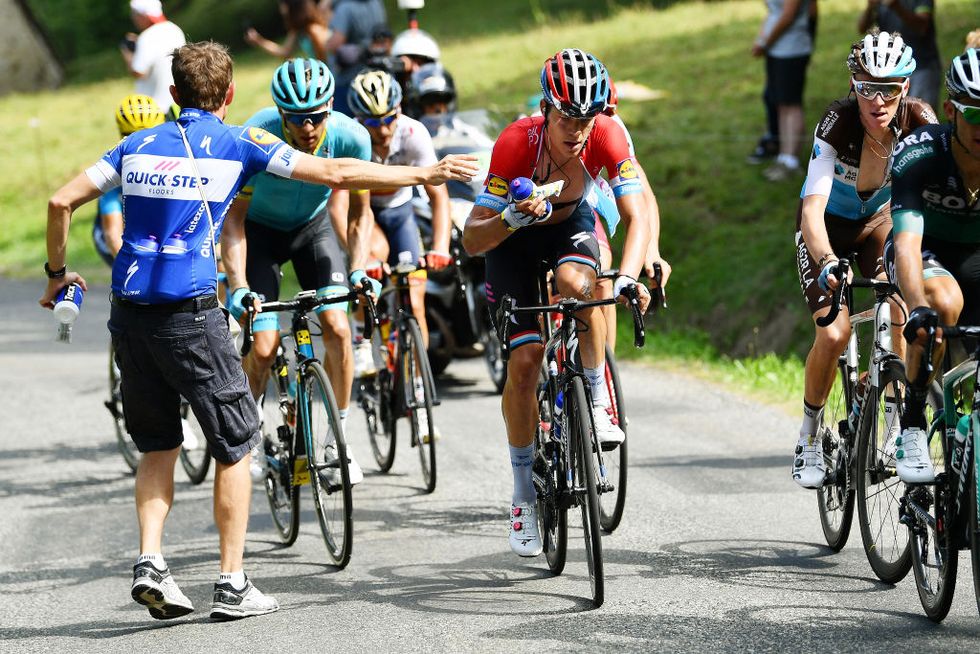
Field sprint - The dash for the finish line by the main group of riders. Also known as a bunch sprint or pack finish.
Flamme rouge - A red flag that hangs from an inflatable banner 1K from the end of each stage to let the riders know the finish is approaching. For sprinters, the flamme rouge indicates when they should launch their final dash for the line. For climbers, it means the pain will end soon.
Full tuck - An extremely crouched aerodynamic position used to achieve maximum speed on descents.
General Classification (GC) - The ranking of riders from first to last according to their total elapsed time, with the first rider boasting the lowest or fastest time. The yellow jersey goes to the GC leader at the end of each day.
Green jersey ( maillot vert) - First awarded in 1953, it goes to the leader of the Points Classification. Riders can earn these points at stage finishes and certain mid-stage sections (see: intermediate sprint). Flat stages award the most green jersey points, which is why field sprinters often win the competition.

Grand Départ - French for “great departure,” it’s the start of the Tour de France. This often takes place in France itself, but has increasingly gone to foreign cities to generate international interest in the race.
Grand Tours: The three most prestigious road races in professional cycling, each held annually over the course of three weeks: the Tour de France in July, the Giro d’Italia in late spring, and the Vuelta a España in late summer.
Grupetto - Large groups of dropped riders that often form at the back of the race on mountain stages. Grupettos are generally filled with sprinters and riders who have finished working for their team leaders.
Hors catégorie - French for “beyond category,” a rating reserved for the most challenging climbs, such as the Alpe d’Huez.
Hors délai - See: time limit.
Intermediate sprint - Found in the middle of each stage, this section awards points in the Tour’s green jersey competition. The first 15 riders to cross the line at these locations earn points.
King of the Mountains (KoM) - A competition for the best climber, which runs on a points system like the green jersey. The leader wears the polka dot jersey .
Lanterne rouge - The last rider in the General Classification. The term, which means “red lantern,” originated in the early days of the Tour, when a car bearing a red lantern would follow the last rider, signifying the back end of the race.
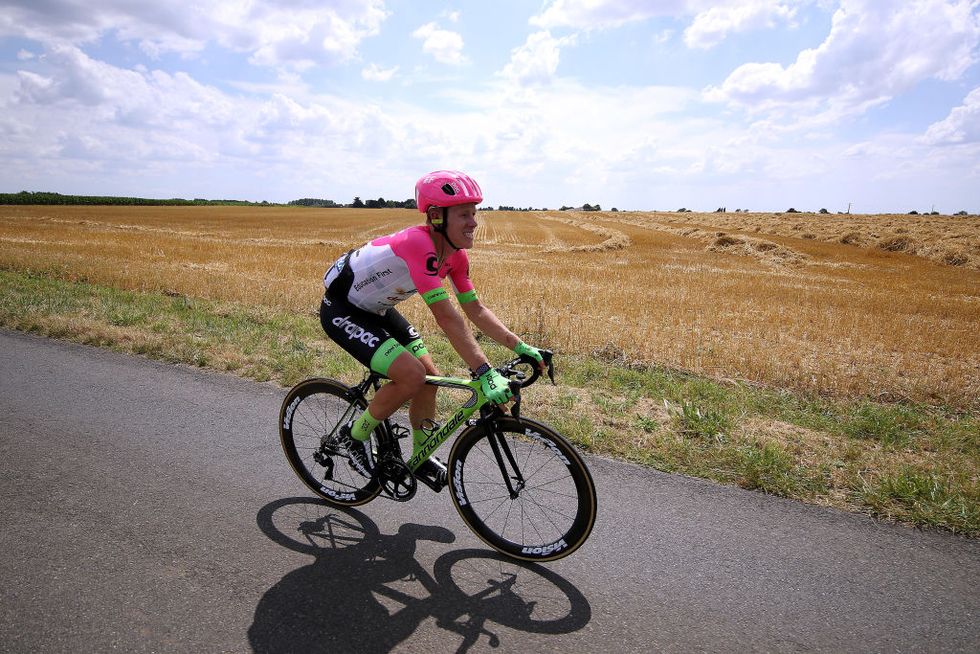
Leadout - A race tactic in which a rider accelerates to maximum speed for the benefit of a teammate in tow. The second rider then leaves the draft and sprints past at an even greater speed.
Lieutenant - The team leader’s right-hand man who helps keep things organized during the stage. The lieutenant also plans and executes strategy, like chasing down breakaways or setting up the final sprint.
Musette - A small cloth bag filled with snacks and water bottles that riders pick up while passing through feed zones. They’re notorious for causing crashes after they’ve been discarded, making feed zones—and the sections immediately following them—some of the most dangerous moments on each stage.
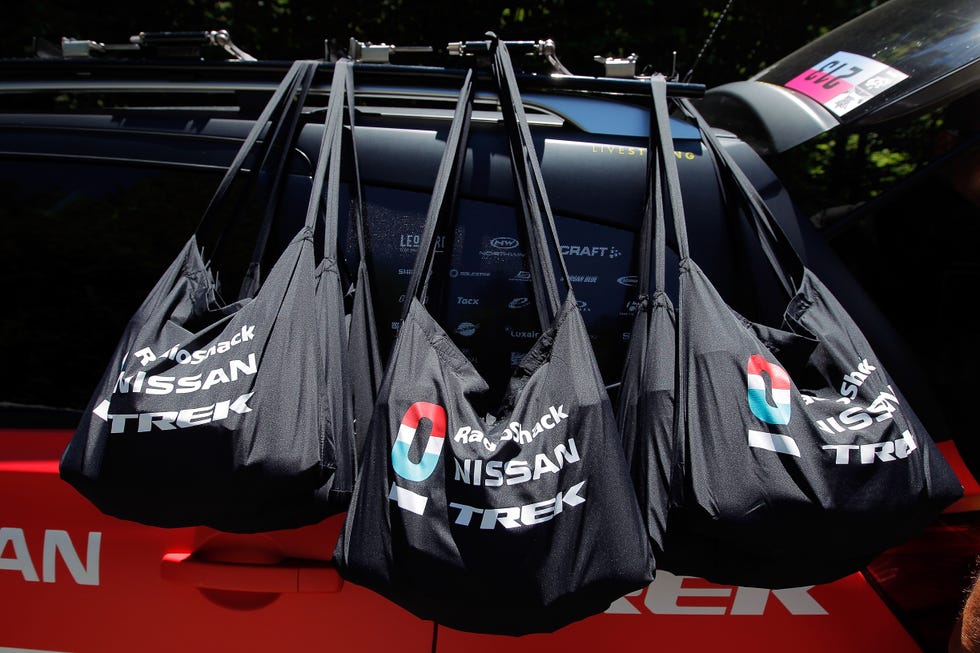
Off the back/out the back (OTB) - See: dropped.
Paceline - A group formation in which each rider takes a turn breaking the wind at the front before pulling off, dropping to the rear position, and riding the others’ draft until he reaches the front again.
Pau - Only Paris and Bordeaux have hosted more Tours de France than Pau, a city at the foot of the Pyrenees that the race visits almost annually.
Peloton - The largest cluster of riders on the road at any given time. Also called the bunch, group, pack, or field.
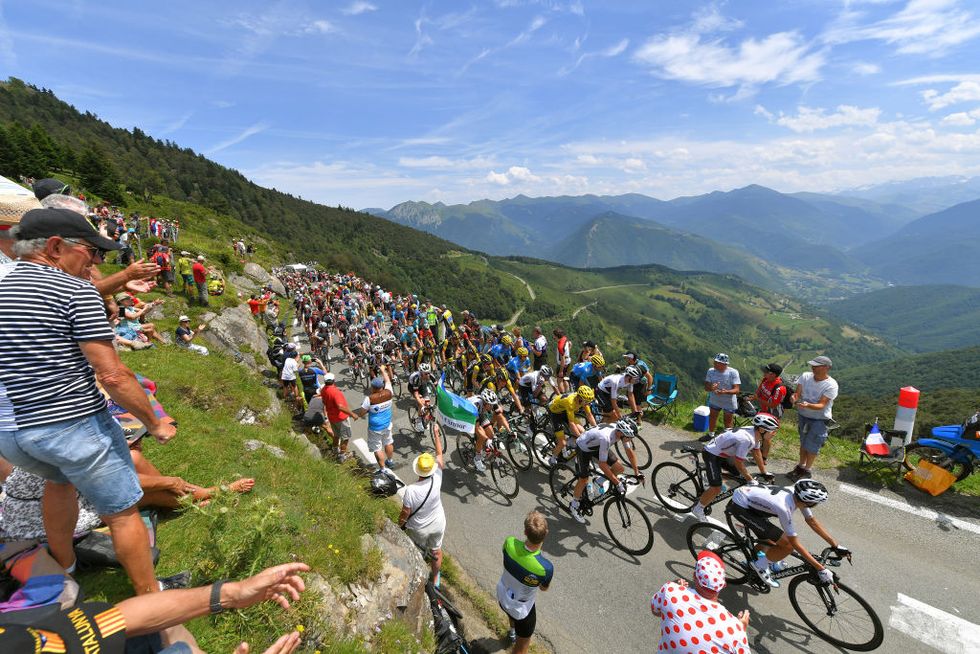
La Planche des Belles Filles - One of the newer summit finishes, found in the Vosges. With an average gradient of almost 9 percent and several pitches that hit 20 percent, the climb always serves as an early indicator of the Tour’s true overall contenders.
Polka dot jersey - First given in 1975, it goes to the leader of the King of the Mountains competition. Riders earn points at the top of each categorized climb.

Poursuivant - French for “pursuer,” it refers to those riders who break away from the peloton to chase the race leaders (see: “ Tête de la course”).
Prologue - A short stage held as the opener of the Grand Tours. It’s usually less than 5 miles long and designed mainly as a showcase kick-off (and a way to get the yellow jersey on someone’s back right away).
Publicity caravan - A huge procession of vehicles that traces the day’s route before the pack. Each Tour sponsor has at least one car, making the caravan bigger than the race itself in terms of personnel.
Pull (pull through) - To take a turn at the front.
Pull off - To move over after riding in the lead so another rider can come to the front.
Pyrenees - A mountain range on the border between France and Spain.
Rollers - An indoor bike trainer that works like a treadmill for bikes. (Also, a series of short hills.) Tour riders use them to warm up prior to a stage.
4 Great Rollers and Trainers


Tacx Antares Retractable Rollers
Simple, durable, and designed to help you stay on, these rollers are affordable and great for riders looking to try out rollers.

The most affordable, fully immersive smart trainer for those wanting the virtual riding experience.

Alloy Rollers
Simple and durable, these traditional rollers will stand the test of time.

Kinetic RS Power Bike Trainer
This is a reliable trainer that lets you get into the virtual world for far less than most.
Slipstream (draft) - The pocket of calmer air behind a moving rider. See: drafting.
Soft-pedal - To pedal without actually applying power. If a rider is in a solo break, his teammates will impede the chase effort by soft-pedaling at the front of the pack. If a racer in a break doesn’t want to take his pull, he’ll soft-pedal.
Soigneur - Team staffers that basically take care of anything not covered by the directeur sportif or the team mechanics. That includes things like finalizing hotel arrangements, assembling the day’s musettes, giving massages, doing laundry, and countless other necessary, thankless tasks.
Summit finish - Stages that end atop a categorized climb are called summit finishes. Time gaps here are usually large as climbs separate riders into groups, with often one rider winning alone or “solo.”
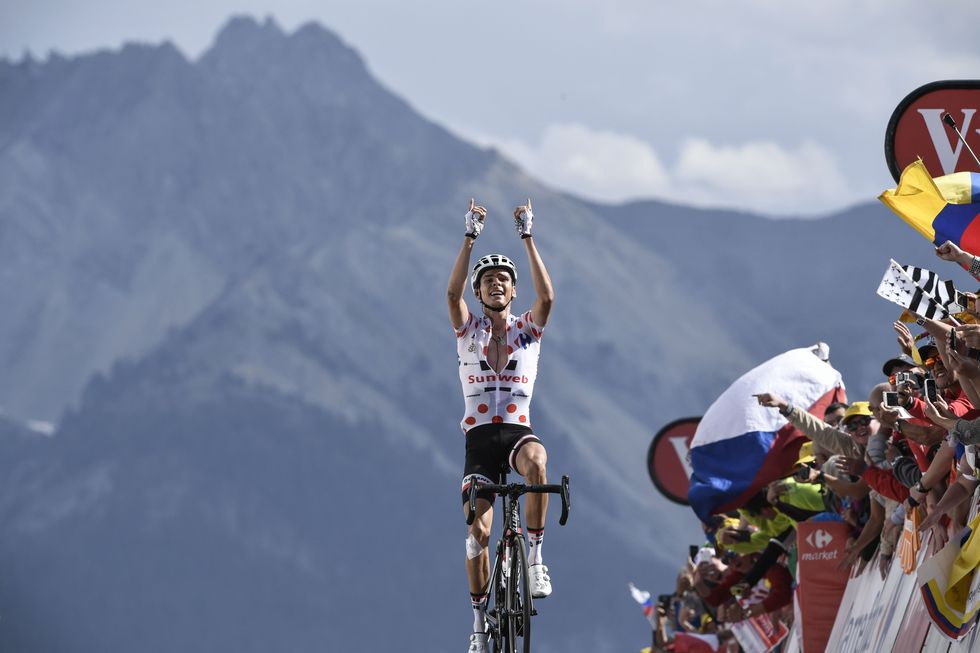
Switchback - A 90-degree or greater turn.
Take a flyer - To suddenly sprint away from a group.
Team time trial (TTT) - A race against the clock with two or more riders on a given team working together. See: time trial.
Tête de la course - French for “head of the race,” it refers to the rider or riders in the lead at any given point on a stage.
Time bonus - Awarded to the first three finishers at the end of each stage (besides the time trials). Bonuses of 10, six, and four seconds count toward each rider’s place on the General Classification. Time bonuses of eight, five, and two seconds are also awarded at special sprints near the end of key stages.
Time limit - Riders must finish each stage within a certain time limit, calculated based on difficulty, average speed, and the winning rider’s finishing time. Those who fail to finish within that time are considered hors délai, or “beyond the limit,” and must leave the race.
Time trial (TT) - A race against the clock in which riders start at set intervals and cannot give or receive a draft. Racers may use aero bars and helmets, which aren’t allowed in ordinary stages.
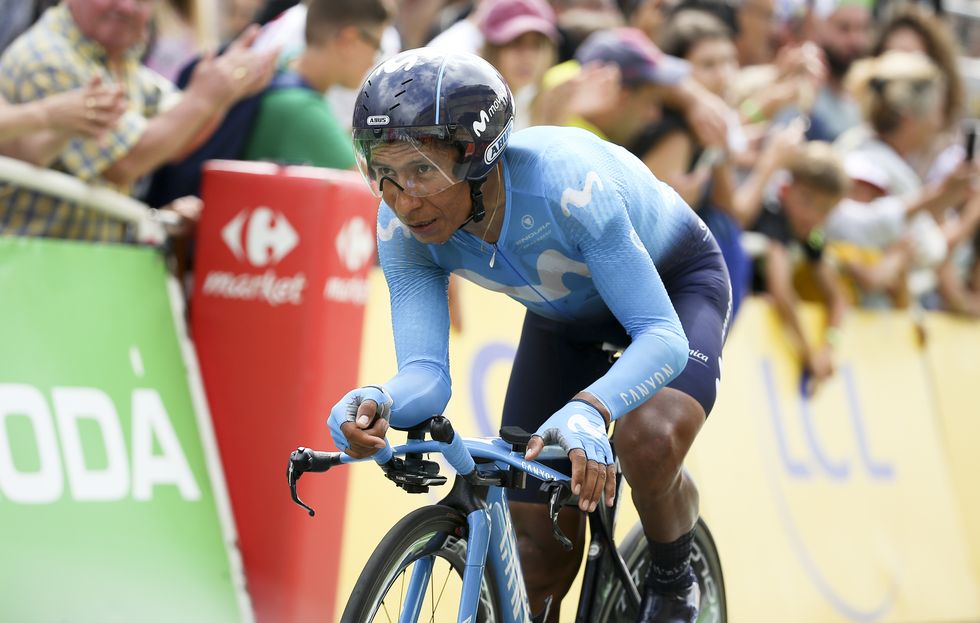
Le Tour - Whenever someone says le Tour , it’s plain they mean the Tour de France. No other race gets this treatment.
Tourmalet - First appearing in 1910, the Tourmalet has been climbed more than any other ascent in Tour history. Located in the heart of the Pyrenees, it can be approached from two equally difficult sides.
Union Cycliste Internationale (UCI) - The official governing body of professional cycling worldwide.
Vosges - A mountain range in eastern France.
White jersey ( maillot blanc) - Created in 1975, it recognizes the Tour’s Best Young Rider, or the rider under age 26 with the highest position on the General Classification.
Yellow jersey ( maillot jaune) - First awarded midway through the 1919 Tour, it identifies the rider currently leading the General Classification.
Since getting hooked on pro cycling while watching Lance Armstrong win the 1993 U.S. Pro Championship in Philadelphia, longtime Bicycling contributor Whit Yost has raced on Belgian cobbles, helped build a European pro team, and piloted that team from Malaysia to Mont Ventoux as an assistant director sportif. These days, he lives with his wife and son in Pennsylvania, spending his days serving as an assistant middle school principal and his nights playing Dungeons & Dragons.

.css-1t6om3g:before{width:1.75rem;height:1.75rem;margin:0 0.625rem -0.125rem 0;content:'';display:inline-block;-webkit-background-size:1.25rem;background-size:1.25rem;background-color:#F8D811;color:#000;background-repeat:no-repeat;-webkit-background-position:center;background-position:center;}.loaded .css-1t6om3g:before{background-image:url(/_assets/design-tokens/bicycling/static/images/chevron-design-element.c42d609.svg);} Member Exclusive
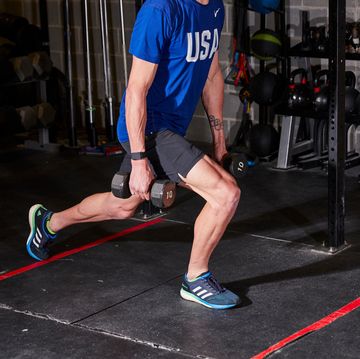
Nerve Flossing for Knee Pain
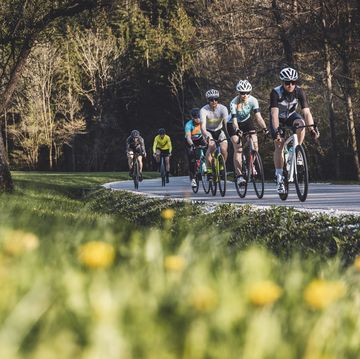
5 Spring Training Mistakes
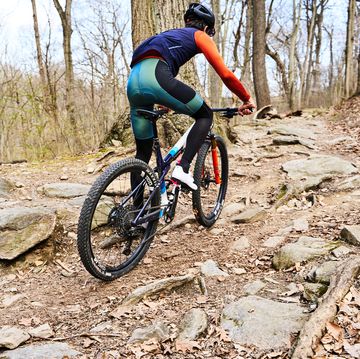
Piriformis Exercises for Cyclists
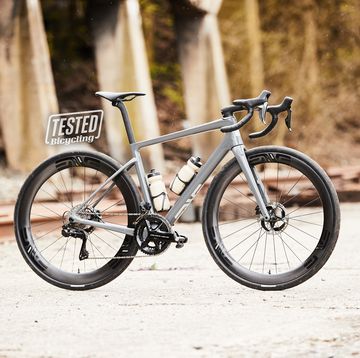
Enve’s Fray Is an All-Road Race Bike
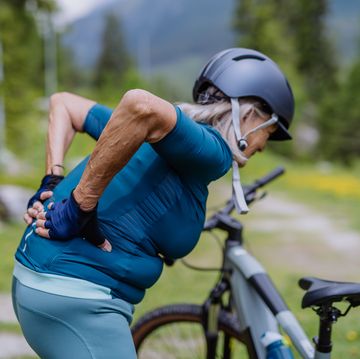
What Is Swayback Posture?
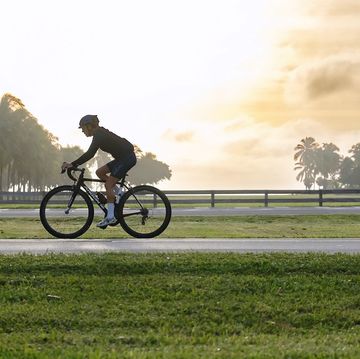
How This 64-Year-Old Keeps Riding With Gratitude

Side Plank Variations to Target the Obliques

How to Prepare for a FTP Test
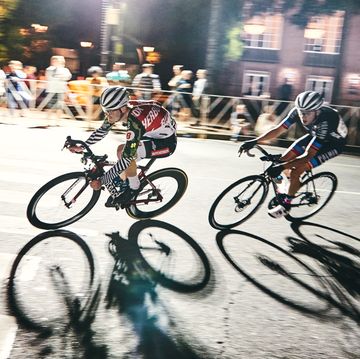
8-Week Beginner Crit Training Plan
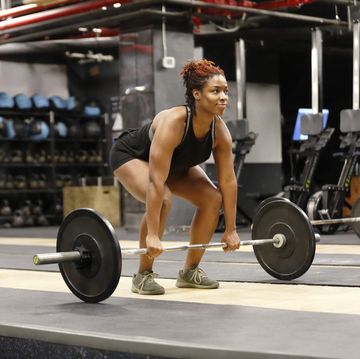
Feel Happier in 10 Minutes With These Moves
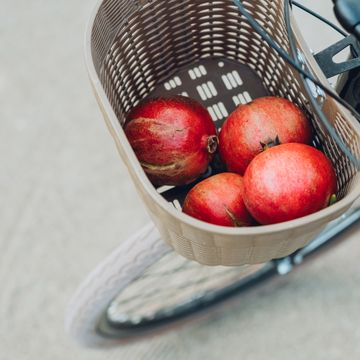
What Fruit is In Season Now?

Bike racing for the ordinary cyclist
Tour de France for dummies: a beginner’s guide
Around this time of the year, the Tour de France keeps popping up in my conversations with non-cycling friends. Despite how little someone knows or cares about cycling, everyone’s at least heard of Le Tour.
At first, it surprised me how little people know about the Tour de France. Basic concepts like “how do you win?” aren’t commonly understood. I guess keen cyclists who live and breathe the sport take that stuff for granted. It can be confusing to the uninitiated.
With that in mind, here’s a simple explanation of the Tour de France for non-cyclists, presented in a FAQ format. I’ll strip out as much of the jargon and complexity as I can, keeping strictly to the basics. After reading this, anyone will be able to follow what’s going on in the race, at least at a rudimentary level.
Here is a beginner’s guide to watching and understanding the Tour—a “Tour de France for dummies”.
What is the Tour de France?
The Tour de France is an annual bike race that goes for three weeks. It takes place mainly in France, but often traverses into other countries. For example, this year’s race starts in Belgium. It always finishes in Paris.
How do you win the Tour de France?
The Tour is made up of 21 separate “ stages “; one stage per day. Think of each stage as a standalone race.
In each stage, all of the riders start at Point A and ride to Point B. The first person to reach Point B wins that stage and gets a prize. The next day, everyone starts at Point C and races to Point D, and so on. Winning a stage is a big deal in itself. It can be a career-defining moment for some cyclists.
But how does one win the whole Tour de France? It’s decided by time. You add up the time each rider takes to finish each stage. Whoever finishes all 21 stages in the lowest cumulative time wins the overall Tour de France—also known as winning the “ General Classification “.
Who rides in the Tour de France?
The race is contested by professional teams. Riders represent their team, not their nation.
The Tour de France is for men only. Currently, there is no equivalent race for women.
This year, there are 22 teams of 8 riders each, meaning 176 riders will start the Tour de France. However, there can only be one winner—despite being a team sport, the Tour is won by an individual. Their teammates help them along the way by using tactics, sacrificing their own interests to help that individual to win.
There are tactics? Don’t you just ride as hard as you can?
Nope, it’s much more interesting than that!
Because of air resistance, you save a lot of energy when cycling behind another rider. If you simply rode as hard as you could from Point A to Point B, a competitor could just ride behind you (in your draft) waiting for you to get tired before overtaking you. Across three weeks of hard racing, saving energy is very important.
That’s where team tactics come in. Among the 176 starters, only a handful are strong enough to have a realistic chance of winning the General Classification. The rest will have different goals. Some will be trying to win a stage, some will try to win one of the other sub-competitions (more on that later), while the rest ride as teammates to help their team leader achieve their goals.
A common tactic, for example, is to ride in front of your team leader, taking the wind for them so they save energy. That’s why you’ll often see long rows of teammates riding in a line. Another example of teamwork is fetching water bottles for your teammate.
How does terrain affect the race?
Some stages cover flat roads. Others are a little hilly. Some are downright mountainous.
Flat stages tend to end in a bunch sprint, with a huge mass of riders rushing at the line together. This is because of the aforementioned air resistance: on a flat road, it’s easy to sit behind other riders, so it’s very hard to escape from the big bunch of riders (called the “ peloton ”). Flat courses favour “sprinters”—bigger riders who can put out a lot of power in the final few hundred metres of a stage.
Hilly and mountainous stages can end with a small group or even just a lone individual reaching the finish line first. On climbs, aerodynamics plays a smaller role, so heavier riders can get dropped from the peloton before the finish, leaving only the lighter, fitter riders in contention.
Why is there always a small group up ahead?
Although everyone starts together at Point A, a few riders will try to break away from the peloton early on. They may do this for one of many reasons, such as:
- They are bad at sprinting, so breaking away early is their best chance of winning the stage.
- They want to get TV exposure for their team’s sponsors.
- By getting up the road, they force other teams to chase while their own teammates rest within the peloton.
Sometimes, riders in the peloton will react, chasing hard to bring those riders back into the bunch before they get too far away.
Since it’s such a long race, nobody has the energy to keep accelerating and chasing forever. As a result, eventually the action settles down with a “ breakaway ” group of riders ahead and everyone else in the main peloton behind. The main drama of the stage is to see whether or not the peloton can organise a chase to gradually reel in the breakaway before the finish.
Sometimes, the breakaway manages to stay away all the way to the end of the stage. The winner outsprints their breakaway companions close to the finish or is strong enough to ride away beforehand.
What are these stages where they ride one at a time?
There are a few special stages where, instead of all starting together a Point A, the riders start one by one. These are called “individual time trials”. Each rider rides that stage alone and against the clock. There is no drafting and no teamwork. The person who completes that stage in the shortest time wins the stage. Certain riders tend to do well in time trials because of their physiology.
There is a similar stage called a “team time trial”. Each team starts at Point A as a group of eight riders. There is drafting within the individual riders of the same team, but no drafting between teams. The team that covers the course in the shortest time wins that stage.
What does it take to win the Tour de France?
It’s very difficult. Winning the Tour de France is the pinnacle of our sport.
To do it, you must be strong across all kinds of stages and terrains. In particular, you must be able to climb mountains well and ride a strong time trial. Otherwise, you will lose too much time to your rivals across the three weeks.
Flat stages are less important to the General Classification because riders can comfortably ride in the protection of the main peloton and won’t lose any time (noting that, for safety reasons, riders who finish a stage in the same group are given the same time, regardless of whether you were at the front of the group or at the back).
If you are a genuine contender to win the General Classification, your team’s plan for most of the race will be to save your energy. This will leave you fresh and ready to gain time on your rivals at key points of the race, such as on mountain climbs or in the time trials, where aerodynamics are less of a factor.
Consistency is key. Three weeks is a long time, and mishaps like crashes or mechanical incidents can ruin a contender’s chance of winning the Tour de France. So you’ll need a little luck, too.
What’s the prize for winning?
The person who is leading the General Classification during the race wears the famous yellow jersey, the maillot jaune .
The overall winner earns the right to wear the yellow jersey after the final stage. They also get a trophy and prize money of 500,000 euros, though in practice the money is shared among the winner’s team.
What are the other special prizes and jerseys?
As well as the General Classification and winning stages, there are several sub-competitions within the Tour de France that some riders will be targeting as their goals.
Points Classification
Throughout the Tour, riders can earn points for placing highly on stages and at intermediate sprint points. At the end, the rider with the most points wins the points competition.
Time is irrelevant in this competition. The winner of the points classification is usually a sprinter, as they can usually place highly in all the flat stages (despite losing many minutes of time on the mountainous stages).
The leader of the points classification wears the green jersey.
King of the Mountains (KOM) CLASSIFICATION
Throughout the race, there are “classified climbs” where points are awarded to the first few riders who reach the top of the climb. The rider with the most KOM points at the end of the Tour de France wins this competition.
Often, this classification is won by a rider who is good at climbing uphill and gets in a lot of breakaways to collect KOM points before the peloton arrives.
The leader of the KOM classification wears the polka-dot jersey.
Young riders classification
This is won by the best-placed rider on the General Classification under the age of 26. The leader wears the white jersey.
Most aggressive prize (most combative)
This is a subjective prize awarded after each stage. A panel of judges decide which rider was the most aggressive and exciting during that stage. Usually, it goes to someone in the breakaway. The judges tend to favour French riders.
As well as cash prize, that rider gets to wear special red race numbers during the next stage.
At the end of the Tour de France, the judges decide who was the most aggressive rider over the whole race. That person wins the “super-combativity” prize.
Teams classification
The team classification is calculated by adding up the times of the three best-placed riders from each team per stage. The three riders can be different from stage to stage; it’s just the three riders from your team who happened to cross the line first on each given stage.
The team with the lowest cumulative time wins this classification. The leading team wears special yellow numbers during the race.
Lanterne Rouge
This isn’t an official prize, but the rider who finishes the Tour de France in last place on General Classification is called the “lanterne rouge” (red lantern). This sounds easy enough on paper, but the key requirement is that you have to actually finish every stage of the Tour. If you crash and end up in hospital, you’re out of the race entirely.
Oh, and did I mention there’s a time limit? On every stage, there is a time limit calculated based on a percentage of the stage winner’s time. If you are unable to complete the stage within that time, you are kicked out of the race.
So, merely finishing the Tour de France is a pretty big achievement in its own right.
The Tour de France is the world’s biggest bike race and the biggest annual sporting competition.
Now, when you change channels to SBS this July, you’ll know enough to follow the action. Armed with this knowledge, you can appreciate the drama and excitement of what otherwise looks like just a bunch of oddly-dressed men trundling across France.
Or, I guess, you could always watch it for the scenery.
Know a friend who’s clueless about the Tour de France? Share this article with them so they can begin to love this incredible event!
Related posts:
Leave a reply cancel reply.
Your email address will not be published. Required fields are marked *
- Subscribe to newsletter
It's going to be so great to have you with us! We just need your email address to keep in touch.
By submitting the form, I hereby give my consent to the processing of my personal data for the purpose of sending information about products, services and market research of ŠKODA AUTO as well as information about events, competitions, news and sending me festive greetings, including on the basis of how I use products and services. For customer data enrichment purpose ŠKODA AUTO may also share my personal data with third parties, such as Volkswagen Financial Services AG, your preferred dealer and also the importer responsible for your market. The list of third parties can be found here . You can withdraw your consent at any time. Unsubscribe
Tour de France – The Rules Explained

Some teams will focus on the general classification Yellow Jersey, whereas others will focus on winning sprints for The Green or the King of the Mountains Spotted Jersey. There are many rules, both spoken and unspoken, as teams stand to gain a lot from cooperation and respect. Here is what you need to know to enjoy watching Le Tour.
Keep the leaders safe
The start of Le Tour is always an edgy affair as teams compete to establish themselves at the head of the peloton. Crashes and injuries are a real risk, so team leaders need to be protected by their domestiques who effectively muscle everyone else away.

The irony is, the more the teams muscle each other away, the greater the risk of crashes in the peloton. The safest place to be is the front, and everyone is fighting to be there. This Catch 22 situation is almost impossible to mitigate through any official rules, but it’s exciting to watch.
The Yellow Jersey
Winning the General Classification (GC) means you get to wear The Maillot Jaune, aka The Yellow Jersey. To win the GC the leader of a race team must complete all the stages with the lowest overall time.
This means that a GC contender should be a solid all-rounder, equally at home on the mountains as they are in time-trial stages. It can become confusing when you consider a rider could win the GC without winning any individual stage.

Nutrition for Women – How to Get Enough Vitamins and Minerals
Think of it like this – Mark Cavendish may win every flat stage suited to a sprinter, but will probably finish mountain stages at least 20 minutes behind the likes of Nairo Quintana, whereas Quintana will finish a sprint stage within 3 minutes of Cavendish.
Breaks and stage wins
Regardless of who wins the overall Yellow Jersey, an individual stage win on Le Tour is always a special event, and smaller teams will often target one or two specific stages out of the Tour simply to get on the podium. Breaks are the coolest way to achieve that, but not the easiest.
Early on in a stage you may see a small group of riders attempt a break. Usually these are lower order riders with nothing to lose – they keep their sponsors happy by grabbing TV coverage, and most of the time they’re easily caught by the peloton that uses energy much more efficiently.
Royal Breaks
That doesn’t mean that Yellow and Green Jersey contenders can’t have some fun going for a break, but they’re only likely to do it when conditions go in their favour – and in 2016 that’s exactly what Froome and Sagan exploited.
Stage 11 of Le Tour was plagued with crosswinds, so the peloton had been doing their best to speed through it. Sagan found himself at the front with Thomas, Bodnar, and Froome. The Peloton was battered and bruised from minor crashes down the coastal route from Carcasonne, so when Sagan attacked, few cyclists felt confident enough to respond.

Froome leapt on Sagan’s wheel, and Bodnar and Thomas read the situation and realised a fully-fledged Royal Break was on the cards, with both the Yellow and Green Jerseys of Froome and Sagan committed to escaping the peloton. Sagan won the stage, and Froome put a significant dent into his rivals for the Yellow Jersey, finishing the stage in 2nd place.
King of the Mountains
Points are given at the top of climbs for suitably impressive performance, so specialist climbers have an advantage. Climbs are categorised from 1 to 4, with 1 being the steepest. The numbers loosely correspond to the gears of a car – so to drive up a Cat 1 climb you’d need to stick your car in first gear.
Race planners may give big points at the top of a Cat 3 climb if it’s deemed long enough to pose the same challenge as a shorter Cat 1 climb. I should add that there is one climb more difficult than a Cat 1 climb – the Hors Catégorie (HC). An HC climb is beyond categorisation and originally described a climb so severe a car couldn’t pass.
Getting points for the Green Jersey
Points can be given for winning sprints at various parts of a stage, often early on to encourage teams to either up the tempo in the peloton or break early in the hopes the break may succeed.
More points are given to the sprint at the end of the stage, and this encourages teams with specialist sprinters like Sagan, Greipel, Kittel, or Cavendish to stay together. This leads to a similar paradox of teams trying to dominate the front of the peloton to give their team leader a clear run at the finish line.

The classic race rule applies – the rider with the racing line may stick to it knowing that any competing cyclist will yield their line when they realise they have the disadvantage. Naturally, this doesn’t always work in the heat of the moment and spectacular crashes are a real risk in bunch sprints.

Articles you might like

Martin Jahn: “The Tour de France stands as a testament to the reliability and performance of Škoda vehicles.”
He often finds himself up close to the action, watching the Tour de France from the sidelines, not just out of professional duty but because he’s thoroughly captivated by the atmosphere of the world’s largest cycling event. “It’s unparalleled – much like our partnership with…

Dominant van der Poel Wins Paris-Roubaix with Brilliant 60km Solo
The safest bet in the history of gambling, as sure as putting money on the sun rising tomorrow, was that Mathieu van der Poel (Alpecin-Deceuninck) would win Sunday’s Paris-Roubaix. It was a sure thing not only because he is a once-in-a-generation talent, perhaps the best…

Ayuso Wins Itzulia Basque Country, Vingegaard Tour Prospects in Doubt
The 21-year-old Spaniard Juan Ayuso, with stellar support from his UAE Team Emirates, won the crash-marred Itzulia Basque Country, overturning a deficit of 4 seconds to race leader Mattias Skjelmose (Lidl-Trek) on the final climb of the race.

Lotte Kopecky Claims Victory at Paris-Roubaix: ‘It was exactly as we planned’
After an intense competition on the challenging pavé of northern France, the world champion, Lotte Kopecky, emerged victorious at the Paris-Roubaix Femmes, outpacing rivals Elisa Balsamo and Pfeiffer Georgi in a thrilling sprint finish within the iconic Roubaix velodrome.
Eat me, drink me – fuelling riders in the Tour de France
Lecturer, College of Sport & Exercise Science, Victoria University
Postdoctoral Research - Institute of Sport, Exercise and Active Living (ISEAL), Victoria University
Disclosure statement
Andre Nelson has previously undertaken research supported by a grant from Nestec Ltd., Vevey, Switzerland. He does not work for, consult to, own shares in or receive funding from any company or organisation that would benefit from this article, and has no relevant affiliations.
Simon Outram does not work for, consult, own shares in or receive funding from any company or organisation that would benefit from this article, and has disclosed no relevant affiliations beyond their academic appointment.
Victoria University provides funding as a member of The Conversation AU.
View all partners
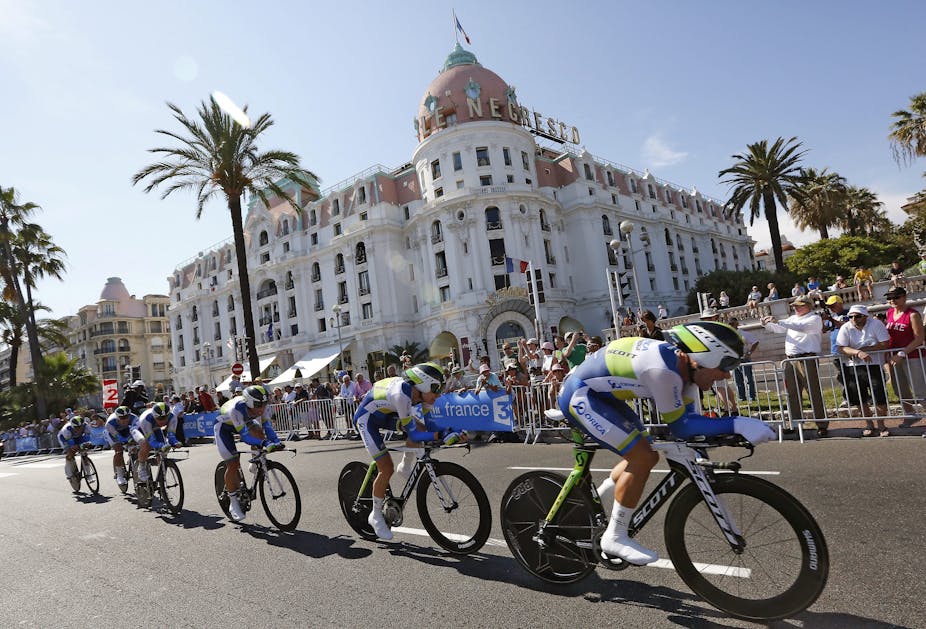
We know professional cyclists have strong legs and the desire to win, but what role does food and drink play in their chances of success?
The Tour de France is considered one of the world’s most demanding events of physical endurance. In its 100th edition, this year’s Le Tour – currently underway – encompasses 21 stages, totalling 3,479 km, [including six mountain stages with climbs as high as 2,000 metres](http://www.velonation.com/News/ID/13144/2013-Tour-de-France-Detailed-analysis-of-the-route-of-the-100th-edition.aspx](http://www.velonation.com/News/ID/13144/2013-Tour-de-France-Detailed-analysis-of-the-route-of-the-100th-edition.aspx).
We can expect cyclist speeds and stage times nearly identical to last year’s event, which featured 20 stages plus a prologue time trial, over 3,497km.
The time taken to complete individual stages ranged from 51 minutes and 24 seconds ( stage nine : a flat time trial over 38km, with a mean speed of 48.4 kilometres per hour) to five hours, 42 minutes and 46 seconds ( stage 12 : a medium mountain-stage over 226km, with a mean speed of 39.5km/h) with an overall mean race-pace of 39.9km/h.
Given such speed and consistency of pace, it probably seems obvious that hydration and nutrition are crucial.
Hydration is the first priority for competitors in any prolonged endurance event. Sweat rates vary between individuals and depend greatly on the workload (heat produced by muscle contraction) and climatic conditions (temperature, humidity, air passage over the body) but are probably about one-to-two litres an hour for most Tour cyclists.

Excessive fluid loss can lead to a loss of power, so it’s recommended that any athlete engaged in vigorous exercise minimises fluid losses to no more than 2-3% of body mass during exercise; electrolytes (such as sodium and potassium) are also lost in the sweat and should be replaced if sweating is heavy and exercise prolonged. But here’s where things get a bit tricky.
In a sport where a 1% change in performance could be the difference between wearing the coveted yellow jersey and second place, fluid over-replenishment may also equate to carrying unnecessary weight. A 70kg rider who has lost two litres of sweat (about 3% of body mass) has less mass to push uphill.
So that rider’s performance should be better on climbs, as long as his power output is not compromised by the mild dehydration. Only with long hours of testing can a Tour rider determine their own optimal balance between hydration, body-mass and power output.
Consuming a sufficient amount of dietary carbohydrates before, during and after exercise is also crucial. We store carbohydrates predominantly as muscle and liver glycogen , and a tiny amount as blood glucose. These are the key fuels for muscle contraction during intense exercise: glycogen depletion below a critical threshold will result in a dramatic decline in performance (known in cycling as “ bonking ” or “hitting the wall”).
Carbohydrate loading can super-compensate glycogen to beyond normal levels, thus minimising the chances of bonking.
Consuming carbohydrates during exercise can also reduce the rate of glycogen decline, enabling an athlete to maintain a given exercise intensity for longer before the onset of fatigue.
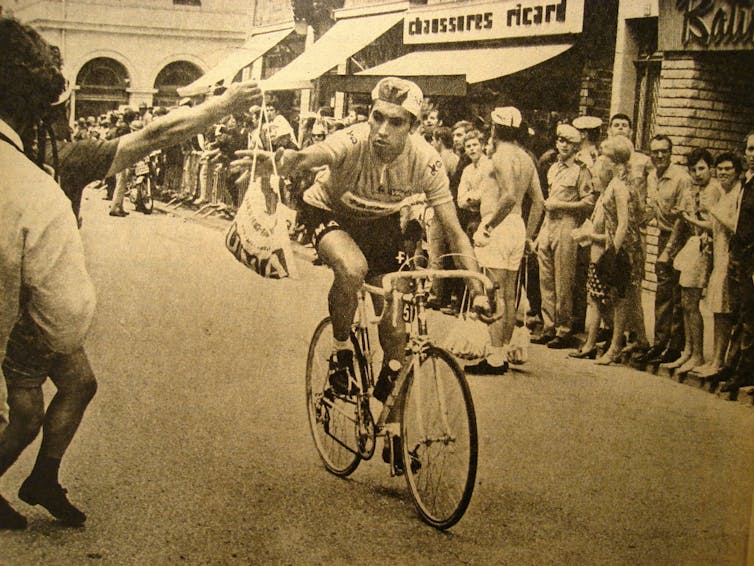
Although sports drinks are one practical way of delivering fluid, electrolytes and carbohydrates (simple sugars such as glucose and fructose, and complex carbohydrates such as maltodextrin), a rider could do similar with water, jam sandwiches [and a banana](http://www.beveragedaily.com/R-D/Cyclists-go-bananas-as-sports-performance-study-finds-fruit-matches-PepsiCo-s-Gatorade](http://www.beveragedaily.com/R-D/Cyclists-go-bananas-as-sports-performance-study-finds-fruit-matches-PepsiCo-s-Gatorade).
Balancing act
To support optimum performance over the three-week Tour, riders also need to consume enough daily energy to offset their high expenditures, and adequate dietary protein to support muscle recovery.
Negative energy balance (such as when the total daily energy from food and drink is less than that expended) or inadequate dietary protein can lead to metabolic changes and cannibalism of existing body proteins to produce additional energy for cells.
It sounds worse than it is, but those changes may impair exercise performance. Tour riders attempt to minimise the risk of impairment by consuming as many kilojoules (kJ) of energy as they expend.
Which raises the obvious next question: how much energy does a Tour de France riders actually expend, and what do they eat and drink?
In the pros’ pockets?
Well before the advent of sports nutrition, riders competing in early Tour editions were pretty much left to their own devices to complete each stage, which included foraging for themselves along the way to satisfy their hunger and thirst.
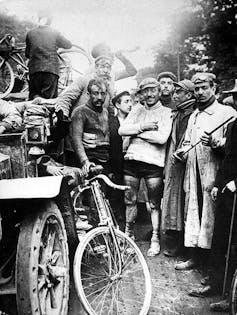
Times have changed although, surprisingly, there is very little published data on the dietary practices of modern-era Tour de France riders.
In one of the very few studies to offer clues as to what professional riders eat and drink in the modern era, a seminal investigation of five 1988 Tour de France competitors published in 1989 found that, on average, they consumed 24,700kJ per day and expended 25,400kJ (divide kJ by 4.2 to get calories/kcal).
That’s around two and half times more energy than a typical sedentary male of similar size might expend. Fluid intake averaged 6.7 litres a day (the largest daily intake was 11.8 litres!) with 61% consumed during cycling.
Dietary carbohydrates accounted for about 61% of their energy intake, fats about 23% and proteins about 15% (nearly 230 grams a day for a 70kg rider).
Half of their daily energy was consumed during exercise, mostly as carbohydrate (about 94 grams an hour), and sports drinks alone contributed 15% of their total daily energy. Interestingly, sweet cakes eaten during rides were the major energy provider in the diets.
High in simple sugars and fats, these were energy dense and clearly palatable for the riders. The rice cake recipe, below, offers a more savoury alternative:
Will winning or finishing second in the 100th Tour hinge on a well-timed drink or bite to eat? We’ll never know, but we do know that the sports nutrition behind the scenes of professional cycling has moved a long way from foraging for food and water in the French countryside.
Further reading: Conversation articles on the Tour de France
- Tour de France

Project Officer, Student Program Development

Faculty of Law - Academic Appointment Opportunities

Operations Manager

Audience Development Coordinator (fixed-term maternity cover)

Lecturer (Hindi-Urdu)

Extra services
- Presentation
- Host cities
- The comitted étape
- Etape series
Regulations
- Tours Operators
- Charity bibs
- Training plans
- VIRTUAL L’ETAPE DU TOUR DE FRANCE BY ZWIFT
- Village infos
- Collect race number
- Mechanical assistance
- Luggage storage
- Plan your stay
- Photos / videos
Before you set off, you must familiarise yourself with the race rules so that you can experience your race in the best conditions and reach the finish:
Remember to verify your compulsory equipment : helmet, water bottle, repair kit with 2 spare inner tubes or a specific tubular tyre or tubeless tyre puncture repair kit as well as a in the event of a puncture.
A mechanical assistance service will be available but you may have to ride for several kilometres to reach the nearest one. Diferents Shimano fixed service points will be positioned along the route and mobile operations.
For your safety, please be attentive about the following points:
- Complete closure of the road: no personal vehicles will be allowed
- Crossroads and junctions : secured by the Gendarmerie and the signallers (near 500 people)
- Different packs : flanked by 80 motorcyclists (Gendarmerie and civilian).
Despite these exceptional conditions, please be prudent throughout the whole race and respect the safety rules :
- Stay on the right when you are being overtaken to avoid creating traffic jams. In the ascents, if you have to get off your bike, stay well to the right to allow other riders to continue their climb.
- Only overtake on the left
- Indicate when you overtake
- Ride very carefully on the downhill sections of the mountain passes, they are very narrow and windy.
- Although the race takes place on closed roads, the organisation's vehicles (safety and medical services) will take the same route as you. They will overtake you on the left so please facilitate their access.
- Ensure you have suitable clothing for all weather conditions, as they can change suddenly in the mountains. Make sure you don’t catch cold or get sunstroke.
- Anticipate your nutritional needs to avoid getting hunger pangs.
- Don’t overestimate your level of fitness.
Dial the emergency no . if you witness a serious accident and indicate the kilometric marker where you are located: +33 9 72 45 60 01 (t his number is indicated on your race number ). You can also dial this number in the event of a problem on the route so that the Race Headquarters can be informed if necessary. A family information point will be set up at the Finish Village.
Please be aware that first-aid stations will be set up along the whole route and at the finish to allow you to seek medical advice, if required.
In the event of an accident, don't panic :
- 11 ambulances and 10 doctors are dispersed along the whole route
- They will take care of you.
- Your bike will be taken to the finish (it will be returned to you upon presentation of your race number)
Riders who are overtaken by the time vehicle are considered as no longer in the race and are therefore disqualified . They will not feature in the classification.
If you are one of these riders, we suggest that you go to the nearest recovery point indicated by the organisation, that you’ll be able to find on your roadmap (in your race number envelope).
A transport scheme will be put in place to take you from the finishing line with your bicycle. It is possible to leave and return by your own means if you wish . However, access to the roads used by the race route will be refused by the organisers and the police for safety reasons and to also respect road-reopening constraints requested by the local authorities.
The detailed route timetable will be available in spring.
Respecting the strating areas
In 2019, for the first time, the organisers took measures in order to use the starting area which you have been assigned to. This also helps improve fluidity and safety on the race route. Too many cyclists try and begin the race in a different starting area from the one they should be in. Some are even unpleasant with the volunteers in charge of handling the starts.
This year again,participants who cheat and begin the race from a starting zone before the one to which they are assigned will be automatically disqualified after analysis of their start time.
In 2023, 150 people were disqualified.
Environmental friendliness
In 2019, for the first time, the organisers took punitive measures with regard to poor behaviour on the roads. These measures paid off because the roads were much cleaner than usual once the race had passed by. Thank you to everybody who contributed to keeping our roads clean.
This year once again, any person observed disposing of waste outside the facilities set up for this purpose shall be disqualified”.
In 2023, 2 people were disqualified after disposing of waste on the road.
- water bottles
- fly tour de france
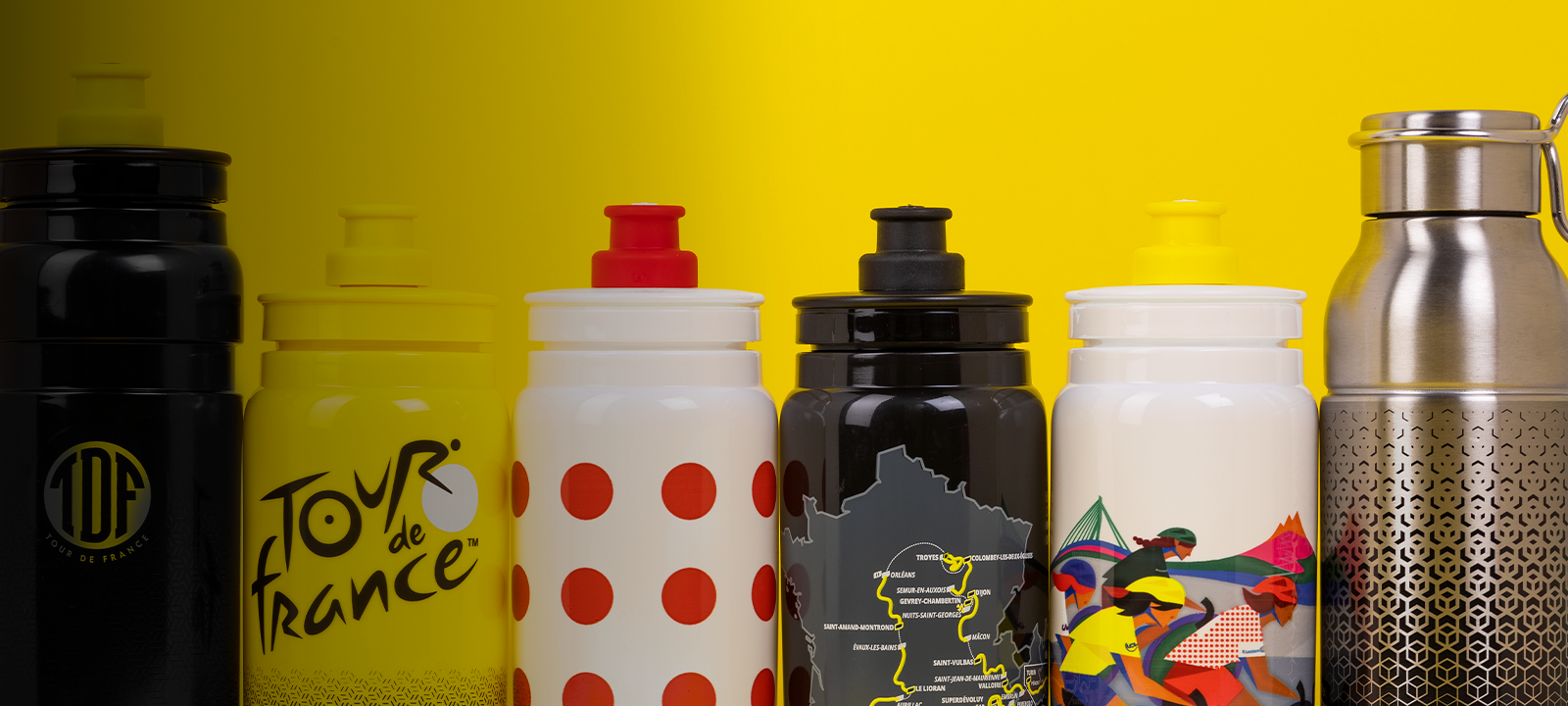
Fly Tour de France
- Capacity 550ml
- Material Plastic
Elite, as official licensee of the Tour de France , created a limited-edition TDF series with 5 bottles with the official design for the 2023 edition of the Grande Boucle. Let's get this show on the road!

Look at variants

FLY TOUR DE FRANCE BLACK 550ml
FLY TOUR DE FRANCE YELLOW 550ml
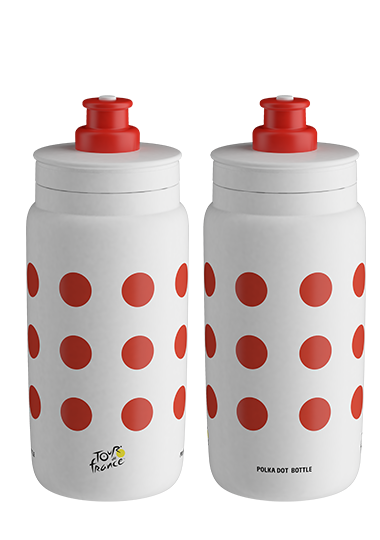
FLY TOUR DE FRANCE RED POLKA DOT

FLY TOUR DE FRANCE FEMME 550ml
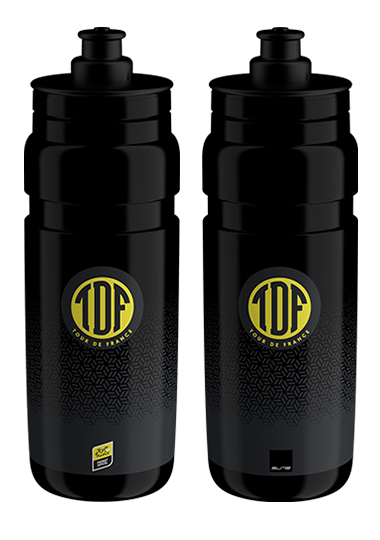
FLY TOUR DE FRANCE WHITE 750ml
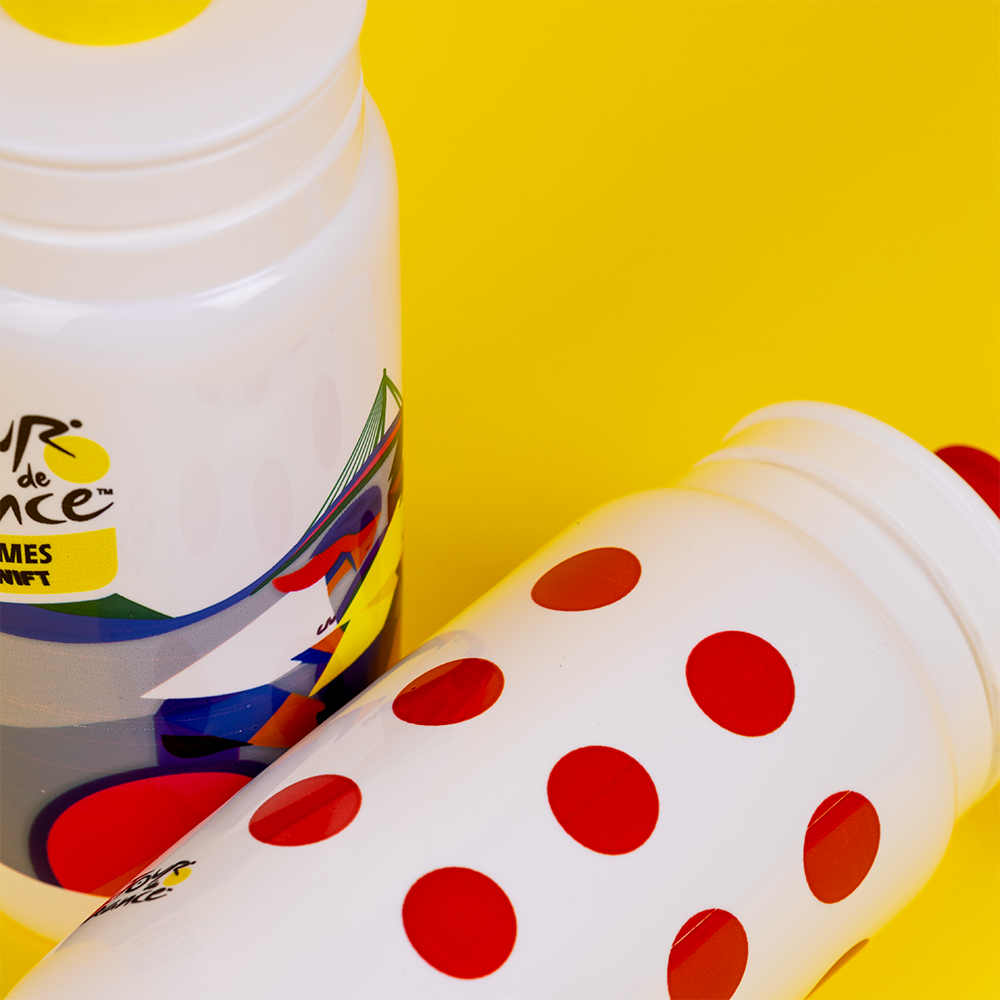
The iconic colours of the Grande Boucle
The new Fly Tour de France series is made of four Fly bottles (three 550ml and one 750ml) and 1 Mia bottle in stainless steel with the official colours of the most eagerly awaited cycling event of the year. Each bottle features at the forefront the Tour de France world-famous logo created by French designer Joel Guenoun in 2002. In addition to the iconic yellow bottle, the black version with the official course map is a special one because it's one of cyclists' favorite.
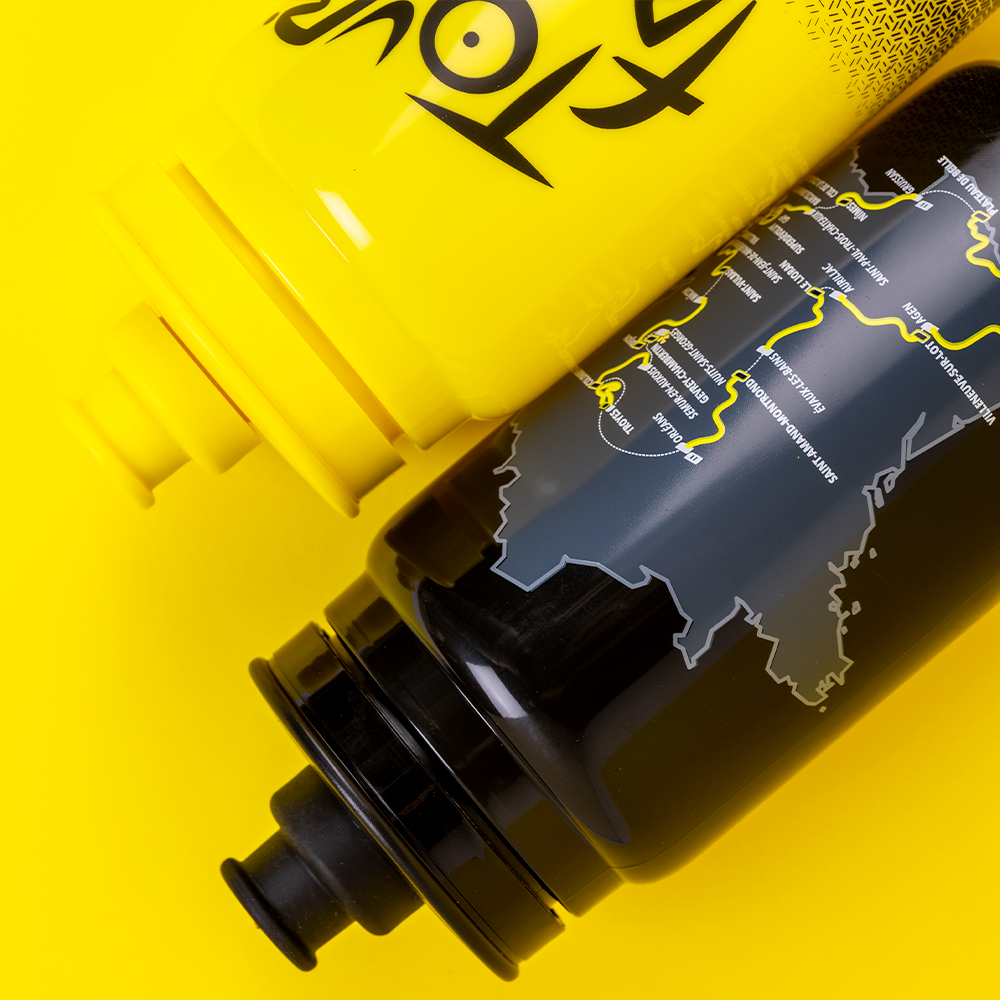
Elite Fly, the world’s lightest water bottle
The Elite Fly range is widely known as the lightest water bottle line ever created thanks to its 30% weight decrease compared to traditional bottles on the market. This is achieved through their variable thickness squeezing structure - they've got a thin middle part and a thick bottom, so there's less material used at no expense of the resistance or functional qualities of the bottle. At the same time, the Fly bottles‘ soft body offers a higher liquid flow rate compared to traditional bottles, helping you get liquids in the saddle simply and quickly, such as in a race situation.
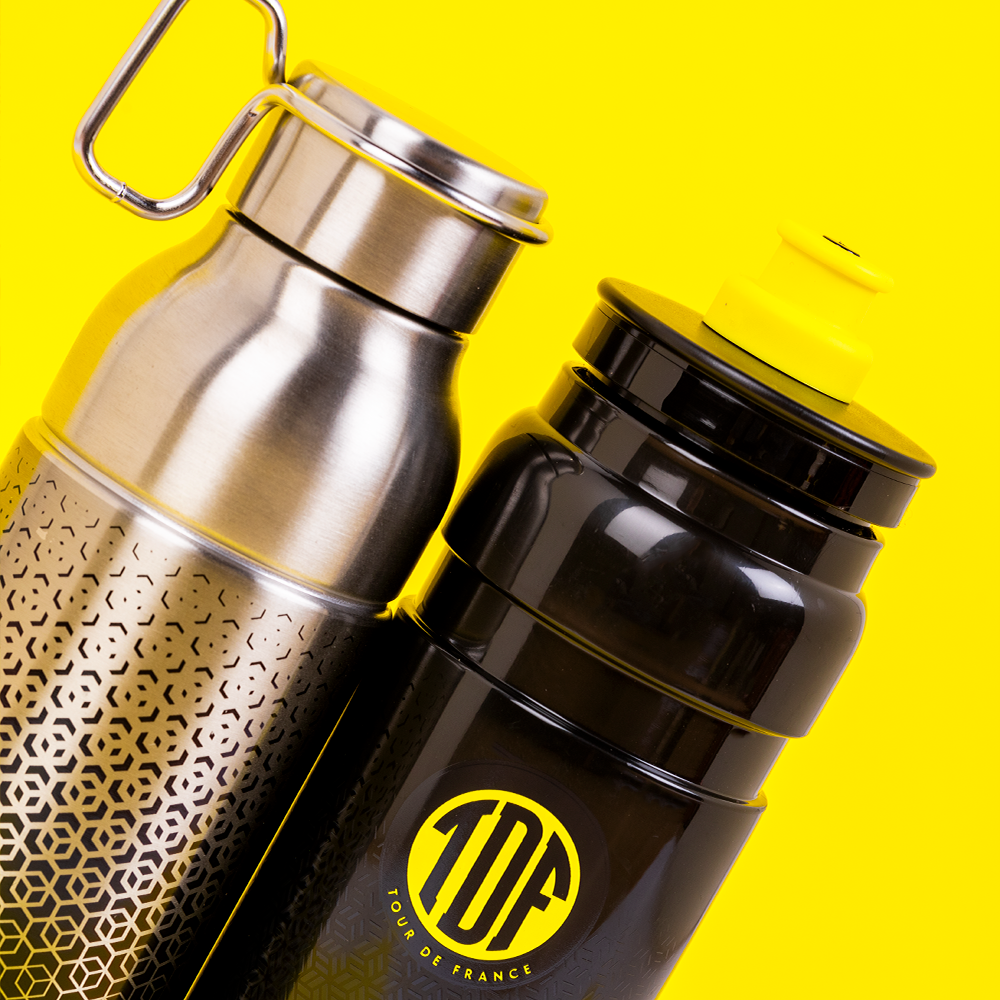
The Women's Tour de France returns in 2023. A course to make history
The Women’s Tour de France returns in 2023 for its second edition, nearly 35 years after it was last staged. The Tour de France Femmes will kick off from July 23 to 30. Elite is thrilled to support the return of this iconic race with a special bottle dedicated to the women in cycling who will have the chance to make history at their own events.
- Elite ecosystem
The best partner for your indoor training

Gradient simulator with steering

Accurate, quiet and powerful
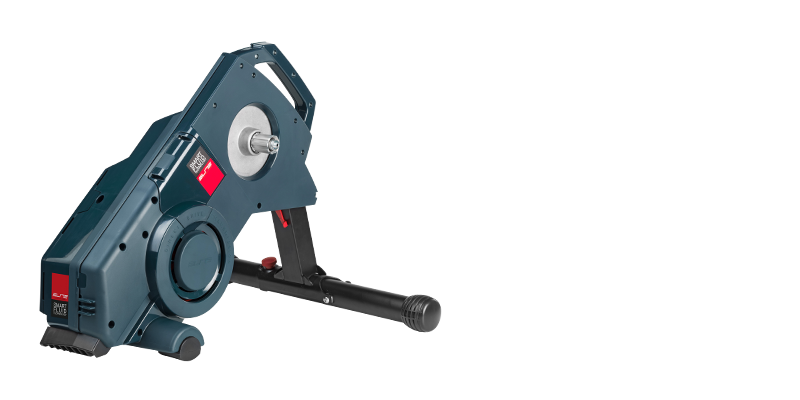
Simple but effective training sessions
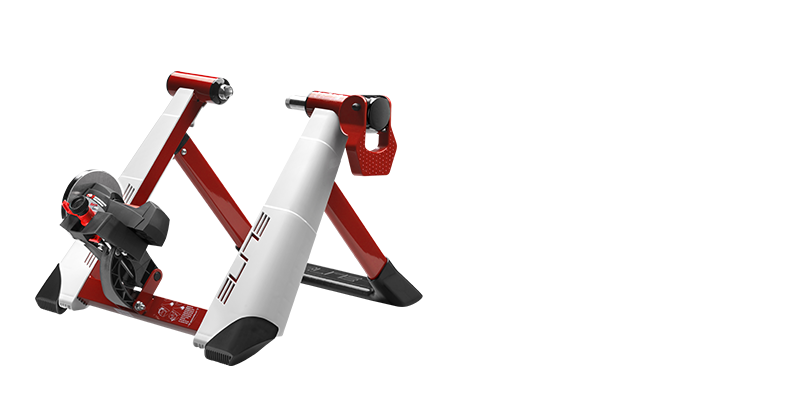
Quick-Motion
Pedal floating in the air...
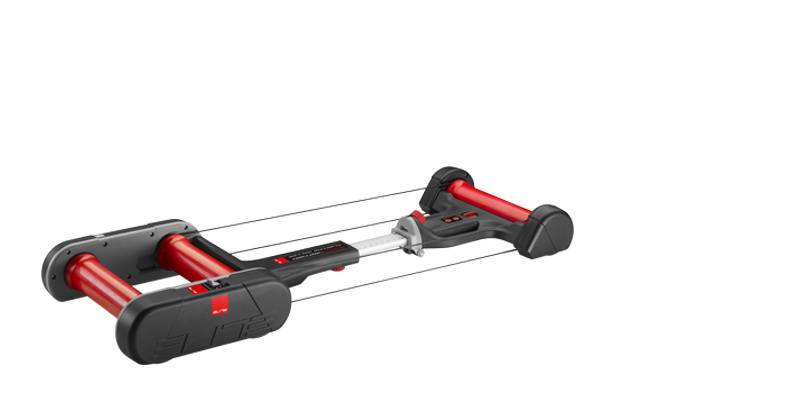
- Home Trainer guide
- My E-Training
- My Real Video
- Pedaling analysis
- RIDING OUTDOORS IN 2023
The lightest sport bottle available worldwide
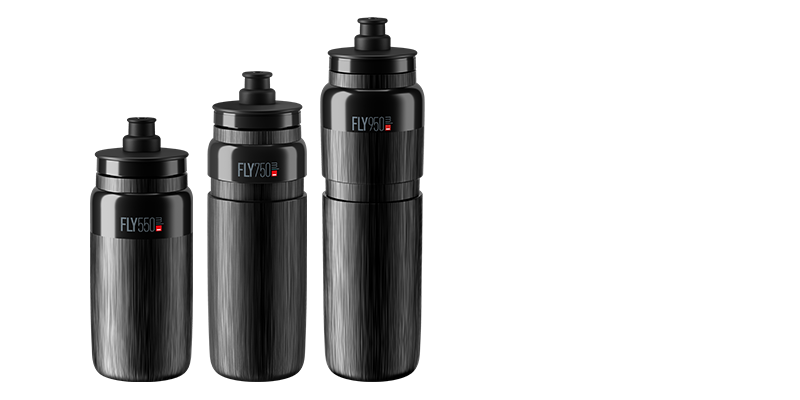
Pure thermal performance
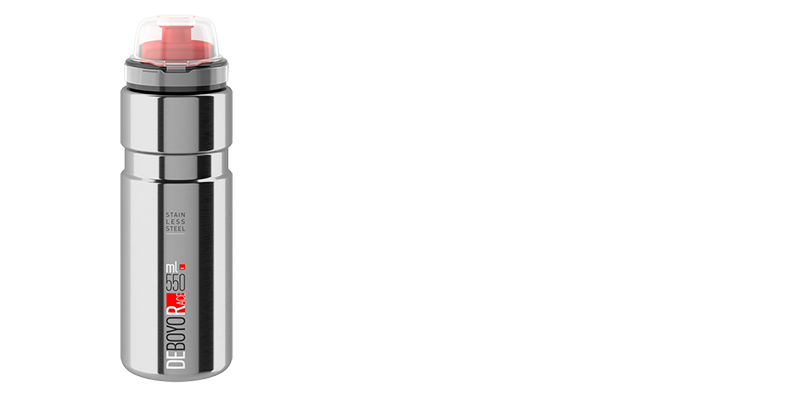
- Storage cases and Accessories
Urban style, plastic-free, stainless steel

- Bottle customization
Vico Carbon
Carbon fiber. Made in Italy
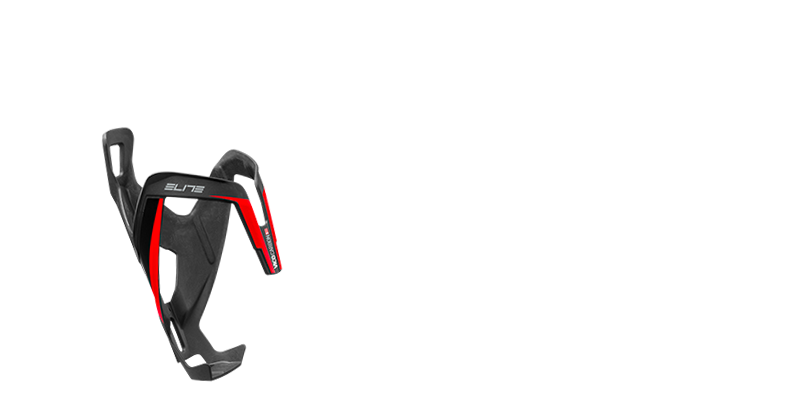
Custom Race Plus
The most popular in the cycling world
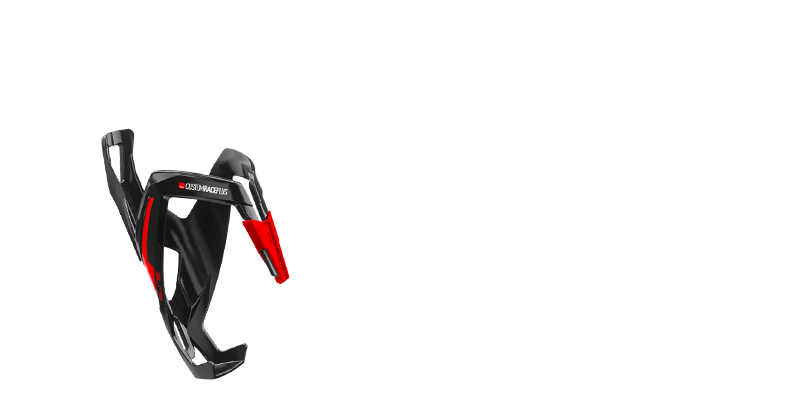
- Eco-Friendly
More’o Inox
High-resistance stainless steel

Elite Monte tow bar bike carrier is a very light, compact and easy to transport bike carrier to be fastened to the tow bar of your car.
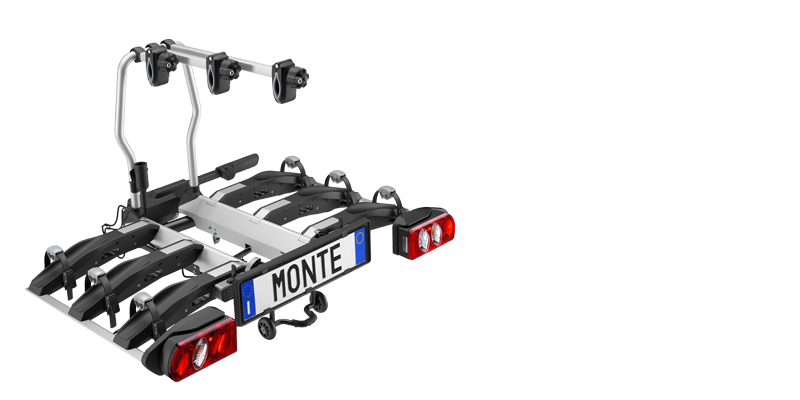
Ideal for transporting your bike on the roof of your car

Your bike is safe
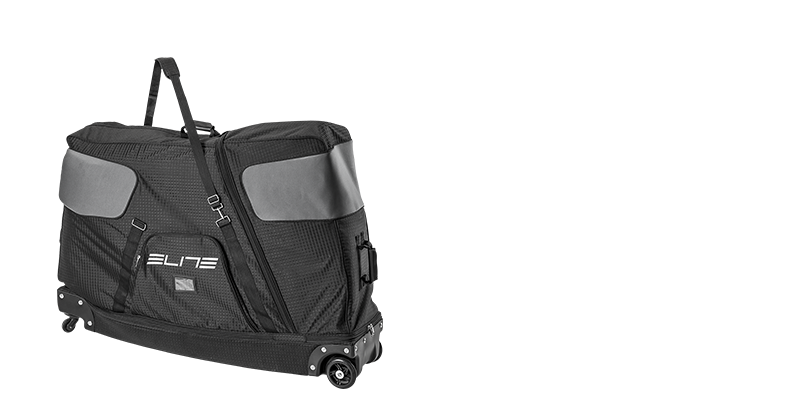
Workstand Race FC
Light and resistant, ideal for your bicycle maintenance
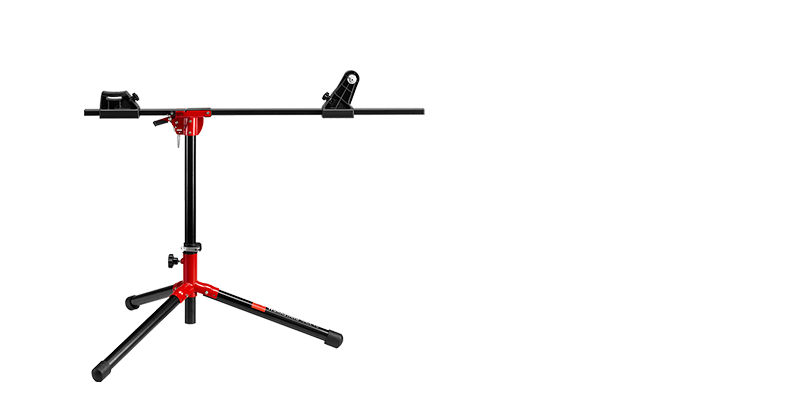
Ozone Elite products are the result of scientific research on ozone.
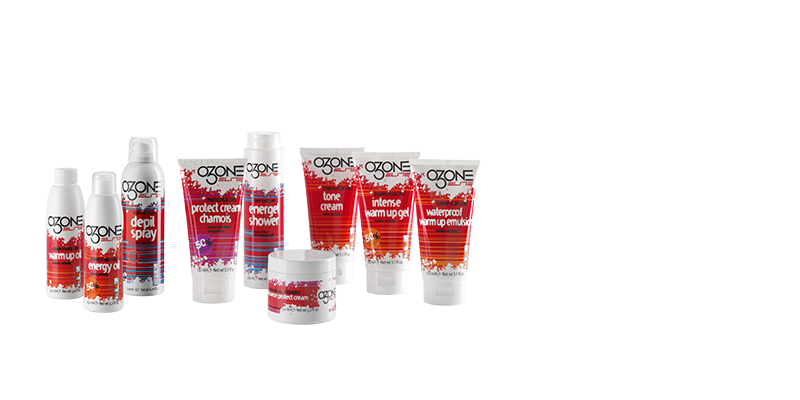
Be stylish!

- Bike transport accessories
Your perfect bag for triathlon

- Innovations
We and selected third parties use cookies or similar technologies for technical purposes and, with your consent, for experience and measurement as specified in the cookie policy .
You can freely give, deny, or withdraw your consent at any time by accessing the preferences panel. Denying consent may make related features unavailable.
Use the “Accetta tutto” button to consent. Use the “Reject” button or close this notice to continue without accepting.
2-FOR-1 GA TICKETS WITH OUTSIDE+
Don’t miss Thundercat, Fleet Foxes, and more at the Outside Festival.
GET TICKETS
BEST WEEK EVER
Try out unlimited access with 7 days of Outside+ for free.
Start Your Free Trial
Powered by Outside
New Water-Bottle Vest at Tour de France
Heading out the door? Read this article on the new Outside+ app available now on iOS devices for members! >","name":"in-content-cta","type":"link"}}'>Download the app .
Image: Oleg Tinkov Twitter
As we tweeted yesterday during our Twitter coverage of stage 1 of the Tour de France, we noticed a Tinkoff-Saxo rider wearing what appears to be a new vest for carrying water bottles.
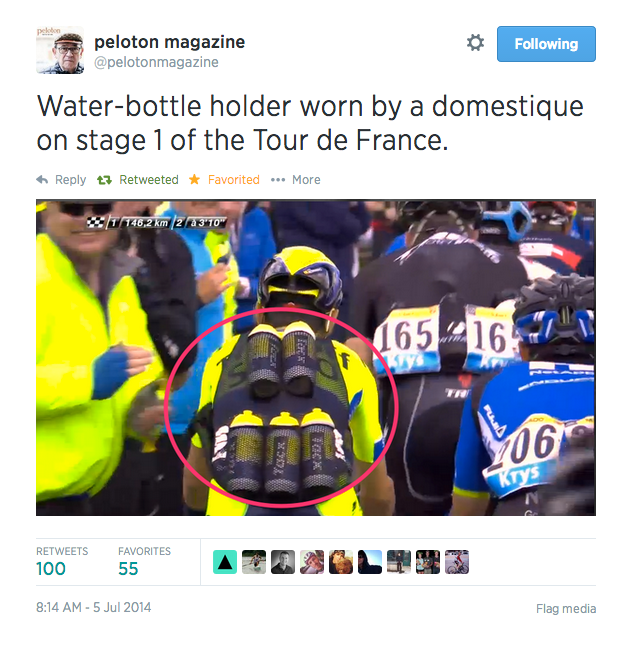
We hadn’t seen this exact type of vest in a road race before.
This soon caught the attention of many on social media .
Here it is in action on stage 2:
Team owner Oleg Tinkov tweeted some info about the “BAR Jersey,” which he said was invented by pro rider Michael Rogers and produced by Sportful exclusively for Tinkoff Saxo.

It appears to hold five bottles and eliminates the need for riders to stuff their already tight jerseys. The bottles appear to fit snug in the vest, meaning it’s less likely a slippery bottle will be dropped and potentially cause chaos in the pack.
It’ll be interesting to see if this catches on.
In contrast, this is currently what most pros have to do when they go fetch bottles:
Popular on Velo
\n >\", \"path\": \"https:\/\/velo.outsideonline.com\/news\/bianchi-issues-paris-roubaix\/\", \"listing_type\": \"recirc\", \"location\": \"list\", \"title\": \"bianchi says mechanics disregarded instructions in paris-roubaix bike issues\"}}\u0027>\n bianchi says mechanics disregarded instructions in paris-roubaix bike issues\n \n \n \n \n \n\n \n \n \n \n \n\n \n "},{"title":"paris-roubaix rewind: cool kopecky, magnificent mathieu, and jury drops hammer on tarling, van dijke","url":"https:\/\/velo.outsideonline.com\/road\/road-racing\/paris-roubaix-rewind-cool-kopecky-magnificent-mathieu-and-jury-drops-hammer-on-tarling-van-dijke\/","markup":" \n \n\n\n \n\n \n \n >\", \"path\": \"https:\/\/velo.outsideonline.com\/road\/road-racing\/paris-roubaix-rewind-cool-kopecky-magnificent-mathieu-and-jury-drops-hammer-on-tarling-van-dijke\/\", \"listing_type\": \"recirc\", \"location\": \"list\", \"title\": \"paris-roubaix rewind: cool kopecky, magnificent mathieu, and jury drops hammer on tarling, van dijke\"}}\u0027>\n \n \n \n \n \n \n\n \n \n\n \n\n \n \n\n \n \n >\", \"path\": \"https:\/\/velo.outsideonline.com\/road\/road-racing\/paris-roubaix-rewind-cool-kopecky-magnificent-mathieu-and-jury-drops-hammer-on-tarling-van-dijke\/\", \"listing_type\": \"recirc\", \"location\": \"list\", \"title\": \"paris-roubaix rewind: cool kopecky, magnificent mathieu, and jury drops hammer on tarling, van dijke\"}}\u0027>\n paris-roubaix rewind: cool kopecky, magnificent mathieu, and jury drops hammer on tarling, van dijke\n \n \n \n \n \n\n \n \n \n \n \n\n \n "},{"title":"woman who threw cap at mathieu van der poel\u2019s wheel says she had \u2018an afternoon of aperitifs\u2019","url":"https:\/\/velo.outsideonline.com\/road\/road-racing\/woman-who-threw-cap-at-mathieu-van-der-poels-wheel-says-she-had-an-afternoon-of-aperitifs\/","markup":" \n \n\n\n \n\n \n \n >\", \"path\": \"https:\/\/velo.outsideonline.com\/road\/road-racing\/woman-who-threw-cap-at-mathieu-van-der-poels-wheel-says-she-had-an-afternoon-of-aperitifs\/\", \"listing_type\": \"recirc\", \"location\": \"list\", \"title\": \"woman who threw cap at mathieu van der poel\u2019s wheel says she had \u2018an afternoon of aperitifs\u2019\"}}\u0027>\n \n \n \n \n \n \n\n \n \n\n \n\n \n \n\n \n \n >\", \"path\": \"https:\/\/velo.outsideonline.com\/road\/road-racing\/woman-who-threw-cap-at-mathieu-van-der-poels-wheel-says-she-had-an-afternoon-of-aperitifs\/\", \"listing_type\": \"recirc\", \"location\": \"list\", \"title\": \"woman who threw cap at mathieu van der poel\u2019s wheel says she had \u2018an afternoon of aperitifs\u2019\"}}\u0027>\n woman who threw cap at mathieu van der poel\u2019s wheel says she had \u2018an afternoon of aperitifs\u2019\n \n \n \n \n \n\n \n \n \n \n \n\n \n "},{"title":"paris-roubaix tech gallery: big tires and gravel bikes","url":"https:\/\/velo.outsideonline.com\/road\/road-gear\/paris-roubaix-tech-gallery-big-tires-and-gravel-bikes\/","markup":" \n \n\n\n \n\n \n \n >\", \"path\": \"https:\/\/velo.outsideonline.com\/road\/road-gear\/paris-roubaix-tech-gallery-big-tires-and-gravel-bikes\/\", \"listing_type\": \"recirc\", \"location\": \"list\", \"title\": \"paris-roubaix tech gallery: big tires and gravel bikes\"}}\u0027>\n \n \n \n \n \n \n\n \n \n\n \n\n \n \n\n \n \n >\", \"path\": \"https:\/\/velo.outsideonline.com\/road\/road-gear\/paris-roubaix-tech-gallery-big-tires-and-gravel-bikes\/\", \"listing_type\": \"recirc\", \"location\": \"list\", \"title\": \"paris-roubaix tech gallery: big tires and gravel bikes\"}}\u0027>\n paris-roubaix tech gallery: big tires and gravel bikes\n \n \n \n \n \n\n \n \n \n \n \n\n \n "},{"title":"more harrowing details of itzulia crash: \u2018can\u2019t believe i will be able to walk and play with my kids one day\u2019","url":"https:\/\/velo.outsideonline.com\/road\/road-racing\/more-harrowing-details-of-itzulia-basque-country-crash-a-brush-with-death\/","markup":" \n \n\n\n \n\n \n \n >\", \"path\": \"https:\/\/velo.outsideonline.com\/road\/road-racing\/more-harrowing-details-of-itzulia-basque-country-crash-a-brush-with-death\/\", \"listing_type\": \"recirc\", \"location\": \"list\", \"title\": \"more harrowing details of itzulia crash: \u2018can\u2019t believe i will be able to walk and play with my kids one day\u2019\"}}\u0027>\n \n \n \n \n \n \n\n \n \n\n \n\n \n \n\n \n \n >\", \"path\": \"https:\/\/velo.outsideonline.com\/road\/road-racing\/more-harrowing-details-of-itzulia-basque-country-crash-a-brush-with-death\/\", \"listing_type\": \"recirc\", \"location\": \"list\", \"title\": \"more harrowing details of itzulia crash: \u2018can\u2019t believe i will be able to walk and play with my kids one day\u2019\"}}\u0027>\n more harrowing details of itzulia crash: \u2018can\u2019t believe i will be able to walk and play with my kids one day\u2019\n \n \n \n \n \n\n \n \n \n \n \n\n \n "},{"title":"power analysis: how mathieu van der poel eviscerated paris-roubaix","url":"https:\/\/velo.outsideonline.com\/road\/road-training\/power-analysis-mathieu-van-der-poel-paris-roubaix\/","markup":" \n \n\n\n \n\n \n \n >\", \"path\": \"https:\/\/velo.outsideonline.com\/road\/road-training\/power-analysis-mathieu-van-der-poel-paris-roubaix\/\", \"listing_type\": \"recirc\", \"location\": \"list\", \"title\": \"power analysis: how mathieu van der poel eviscerated paris-roubaix\"}}\u0027>\n \n \n \n \n \n \n\n \n \n\n \n\n \n \n\n \n \n >\", \"path\": \"https:\/\/velo.outsideonline.com\/road\/road-training\/power-analysis-mathieu-van-der-poel-paris-roubaix\/\", \"listing_type\": \"recirc\", \"location\": \"list\", \"title\": \"power analysis: how mathieu van der poel eviscerated paris-roubaix\"}}\u0027>\n power analysis: how mathieu van der poel eviscerated paris-roubaix\n \n \n \n \n \n\n \n \n \n \n \n\n \n "},{"title":"jonas vingegaard undergoes surgery in spain, with recovery time \u2018not yet clear\u2019","url":"https:\/\/velo.outsideonline.com\/road\/road-racing\/jonas-vingegaard-undergoes-surgery-in-spain-with-recovery-time-not-yet-clear\/","markup":" \n \n\n\n \n\n \n \n >\", \"path\": \"https:\/\/velo.outsideonline.com\/road\/road-racing\/jonas-vingegaard-undergoes-surgery-in-spain-with-recovery-time-not-yet-clear\/\", \"listing_type\": \"recirc\", \"location\": \"list\", \"title\": \"jonas vingegaard undergoes surgery in spain, with recovery time \u2018not yet clear\u2019\"}}\u0027>\n \n \n \n \n \n \n\n \n \n\n \n\n \n \n\n \n \n >\", \"path\": \"https:\/\/velo.outsideonline.com\/road\/road-racing\/jonas-vingegaard-undergoes-surgery-in-spain-with-recovery-time-not-yet-clear\/\", \"listing_type\": \"recirc\", \"location\": \"list\", \"title\": \"jonas vingegaard undergoes surgery in spain, with recovery time \u2018not yet clear\u2019\"}}\u0027>\n jonas vingegaard undergoes surgery in spain, with recovery time \u2018not yet clear\u2019\n \n \n \n \n \n\n \n \n \n \n \n\n \n "},{"title":"cycling and civil rights icon major taylor finally gets the documentary he deserves","url":"https:\/\/velo.outsideonline.com\/road\/road-culture\/cycling-civil-rights-icon-major-taylor-finally-gets-documentary-he-deserves\/","markup":" \n \n\n\n \n\n \n \n >\", \"path\": \"https:\/\/velo.outsideonline.com\/road\/road-culture\/cycling-civil-rights-icon-major-taylor-finally-gets-documentary-he-deserves\/\", \"listing_type\": \"recirc\", \"location\": \"list\", \"title\": \"cycling and civil rights icon major taylor finally gets the documentary he deserves\"}}\u0027>\n \n \n \n \n \n \n\n \n \n\n \n\n \n \n\n \n \n >\", \"path\": \"https:\/\/velo.outsideonline.com\/road\/road-culture\/cycling-civil-rights-icon-major-taylor-finally-gets-documentary-he-deserves\/\", \"listing_type\": \"recirc\", \"location\": \"list\", \"title\": \"cycling and civil rights icon major taylor finally gets the documentary he deserves\"}}\u0027>\n cycling and civil rights icon major taylor finally gets the documentary he deserves\n \n \n \n \n \n\n \n \n \n \n \n\n \n "},{"title":"further antagonism towards mathieu van der poel as spectator throws object at wheels","url":"https:\/\/velo.outsideonline.com\/road\/road-racing\/further-antagonism-towards-mathieu-van-der-poel-as-spectator-throws-object-at-wheels\/","markup":" \n \n\n\n \n\n \n \n >\", \"path\": \"https:\/\/velo.outsideonline.com\/road\/road-racing\/further-antagonism-towards-mathieu-van-der-poel-as-spectator-throws-object-at-wheels\/\", \"listing_type\": \"recirc\", \"location\": \"list\", \"title\": \"further antagonism towards mathieu van der poel as spectator throws object at wheels\"}}\u0027>\n \n \n \n \n \n \n\n \n \n\n \n\n \n \n\n \n \n >\", \"path\": \"https:\/\/velo.outsideonline.com\/road\/road-racing\/further-antagonism-towards-mathieu-van-der-poel-as-spectator-throws-object-at-wheels\/\", \"listing_type\": \"recirc\", \"location\": \"list\", \"title\": \"further antagonism towards mathieu van der poel as spectator throws object at wheels\"}}\u0027>\n further antagonism towards mathieu van der poel as spectator throws object at wheels\n \n \n \n \n \n\n \n \n \n \n \n\n \n "},{"title":"the enve fray is an all-road bike with near-gravel tire clearances","url":"https:\/\/velo.outsideonline.com\/road\/road-gear\/new-enve-fray\/","markup":" \n \n\n\n \n\n \n \n >\", \"path\": \"https:\/\/velo.outsideonline.com\/road\/road-gear\/new-enve-fray\/\", \"listing_type\": \"recirc\", \"location\": \"list\", \"title\": \"the enve fray is an all-road bike with near-gravel tire clearances\"}}\u0027>\n \n \n \n \n \n \n\n \n \n\n \n\n \n \n\n \n \n >\", \"path\": \"https:\/\/velo.outsideonline.com\/road\/road-gear\/new-enve-fray\/\", \"listing_type\": \"recirc\", \"location\": \"list\", \"title\": \"the enve fray is an all-road bike with near-gravel tire clearances\"}}\u0027>\n the enve fray is an all-road bike with near-gravel tire clearances\n \n \n \n \n \n\n \n \n \n \n \n\n \n "},{"title":"why are so many gravel pros doing levi leipheimer\u2019s new road race","url":"https:\/\/velo.outsideonline.com\/gravel\/gravel-racing\/gravel-pros-levis-gran-fondo-road-race\/","markup":" \n \n\n\n \n\n \n \n >\", \"path\": \"https:\/\/velo.outsideonline.com\/gravel\/gravel-racing\/gravel-pros-levis-gran-fondo-road-race\/\", \"listing_type\": \"recirc\", \"location\": \"list\", \"title\": \"why are so many gravel pros doing levi leipheimer\u2019s new road race\"}}\u0027>\n \n \n \n \n \n \n\n \n \n\n \n\n \n \n\n \n \n >\", \"path\": \"https:\/\/velo.outsideonline.com\/gravel\/gravel-racing\/gravel-pros-levis-gran-fondo-road-race\/\", \"listing_type\": \"recirc\", \"location\": \"list\", \"title\": \"why are so many gravel pros doing levi leipheimer\u2019s new road race\"}}\u0027>\n why are so many gravel pros doing levi leipheimer\u2019s new road race\n \n \n \n \n \n\n \n \n \n \n \n\n \n "},{"title":"watch: all the tech we spotted at paris-roubaix","url":"https:\/\/velo.outsideonline.com\/road\/road-gear\/watch-all-the-tech-we-spotted-at-paris-roubaix\/","markup":" \n \n\n\n \n\n \n \n >\", \"path\": \"https:\/\/velo.outsideonline.com\/road\/road-gear\/watch-all-the-tech-we-spotted-at-paris-roubaix\/\", \"listing_type\": \"recirc\", \"location\": \"list\", \"title\": \"watch: all the tech we spotted at paris-roubaix\"}}\u0027>\n \n \n \n \n \n \n\n \n \n\n \n\n \n \n\n \n \n >\", \"path\": \"https:\/\/velo.outsideonline.com\/road\/road-gear\/watch-all-the-tech-we-spotted-at-paris-roubaix\/\", \"listing_type\": \"recirc\", \"location\": \"list\", \"title\": \"watch: all the tech we spotted at paris-roubaix\"}}\u0027>\n watch: all the tech we spotted at paris-roubaix\n \n \n \n \n \n\n \n \n \n \n \n\n \n "},{"title":"woman who threw object at mathieu van der poel\u2019s wheel \u2018to turn herself in\u2019","url":"https:\/\/velo.outsideonline.com\/road\/road-racing\/woman-who-threw-object-at-mathieu-van-der-poels-wheel-to-turn-herself-in\/","markup":" \n \n\n\n \n\n \n \n >\", \"path\": \"https:\/\/velo.outsideonline.com\/road\/road-racing\/woman-who-threw-object-at-mathieu-van-der-poels-wheel-to-turn-herself-in\/\", \"listing_type\": \"recirc\", \"location\": \"list\", \"title\": \"woman who threw object at mathieu van der poel\u2019s wheel \u2018to turn herself in\u2019\"}}\u0027>\n \n \n \n \n \n \n\n \n \n\n \n\n \n \n\n \n \n >\", \"path\": \"https:\/\/velo.outsideonline.com\/road\/road-racing\/woman-who-threw-object-at-mathieu-van-der-poels-wheel-to-turn-herself-in\/\", \"listing_type\": \"recirc\", \"location\": \"list\", \"title\": \"woman who threw object at mathieu van der poel\u2019s wheel \u2018to turn herself in\u2019\"}}\u0027>\n woman who threw object at mathieu van der poel\u2019s wheel \u2018to turn herself in\u2019\n \n \n \n \n \n\n \n \n \n \n \n\n \n "},{"title":"ketones: cycling superfuel or marketing hype visma-lease a bike study seeks to dispel the doubts","url":"https:\/\/velo.outsideonline.com\/road\/road-training\/ketones-cycling-superfuel-or-marketing-hype-visma-lease-a-bike-study-seeks-to-dispel-the-doubts\/","markup":" \n \n\n\n \n\n \n \n >\", \"path\": \"https:\/\/velo.outsideonline.com\/road\/road-training\/ketones-cycling-superfuel-or-marketing-hype-visma-lease-a-bike-study-seeks-to-dispel-the-doubts\/\", \"listing_type\": \"recirc\", \"location\": \"list\", \"title\": \"ketones: cycling superfuel or marketing hype visma-lease a bike study seeks to dispel the doubts\"}}\u0027>\n \n \n \n \n \n \n\n \n \n\n \n\n \n \n\n \n \n >\", \"path\": \"https:\/\/velo.outsideonline.com\/road\/road-training\/ketones-cycling-superfuel-or-marketing-hype-visma-lease-a-bike-study-seeks-to-dispel-the-doubts\/\", \"listing_type\": \"recirc\", \"location\": \"list\", \"title\": \"ketones: cycling superfuel or marketing hype visma-lease a bike study seeks to dispel the doubts\"}}\u0027>\n ketones: cycling superfuel or marketing hype visma-lease a bike study seeks to dispel the doubts\n \n \n \n \n \n\n \n \n \n \n \n\n \n "},{"title":"\u2018not my specialty but i\u2019m going to try\u2019: can mathieu van der poel pip pogacar at li\u00e8ge-bastogne-li\u00e8ge","url":"https:\/\/velo.outsideonline.com\/road\/road-racing\/not-my-specialty-but-im-going-to-try-can-mathieu-van-der-poel-deny-pogacar-at-liege-bastogne-liege\/","markup":" \n \n\n\n \n\n \n \n >\", \"path\": \"https:\/\/velo.outsideonline.com\/road\/road-racing\/not-my-specialty-but-im-going-to-try-can-mathieu-van-der-poel-deny-pogacar-at-liege-bastogne-liege\/\", \"listing_type\": \"recirc\", \"location\": \"list\", \"title\": \"\u2018not my specialty but i\u2019m going to try\u2019: can mathieu van der poel pip pogacar at li\u00e8ge-bastogne-li\u00e8ge\"}}\u0027>\n \n \n \n \n \n \n\n \n \n\n \n\n \n \n\n \n \n >\", \"path\": \"https:\/\/velo.outsideonline.com\/road\/road-racing\/not-my-specialty-but-im-going-to-try-can-mathieu-van-der-poel-deny-pogacar-at-liege-bastogne-liege\/\", \"listing_type\": \"recirc\", \"location\": \"list\", \"title\": \"\u2018not my specialty but i\u2019m going to try\u2019: can mathieu van der poel pip pogacar at li\u00e8ge-bastogne-li\u00e8ge\"}}\u0027>\n \u2018not my specialty but i\u2019m going to try\u2019: can mathieu van der poel pip pogacar at li\u00e8ge-bastogne-li\u00e8ge\n \n \n \n \n \n\n \n \n \n \n \n\n \n "},{"title":"wout van aert forced to skip the giro d\u2019italia: \u2018it\u2019s a big shame\u2019","url":"https:\/\/velo.outsideonline.com\/road\/road-racing\/wout-van-aert-forced-to-skip-the-giro-ditalia-its-a-big-shame\/","markup":" \n \n\n\n \n\n \n \n >\", \"path\": \"https:\/\/velo.outsideonline.com\/road\/road-racing\/wout-van-aert-forced-to-skip-the-giro-ditalia-its-a-big-shame\/\", \"listing_type\": \"recirc\", \"location\": \"list\", \"title\": \"wout van aert forced to skip the giro d\u2019italia: \u2018it\u2019s a big shame\u2019\"}}\u0027>\n \n \n \n \n \n \n\n \n \n\n \n\n \n \n\n \n \n >\", \"path\": \"https:\/\/velo.outsideonline.com\/road\/road-racing\/wout-van-aert-forced-to-skip-the-giro-ditalia-its-a-big-shame\/\", \"listing_type\": \"recirc\", \"location\": \"list\", \"title\": \"wout van aert forced to skip the giro d\u2019italia: \u2018it\u2019s a big shame\u2019\"}}\u0027>\n wout van aert forced to skip the giro d\u2019italia: \u2018it\u2019s a big shame\u2019\n \n \n \n \n \n\n \n \n \n \n \n\n \n "},{"title":"meet andrew august: the american rider is the youngest-ever worldtour pro","url":"https:\/\/velo.outsideonline.com\/road\/road-racing\/diamond-in-the-rough-youngest-ever-worldtour-pro-andrew-august-soaking-it-in-during-rookie-rollout\/","markup":" \n \n\n\n \n\n \n \n >\", \"path\": \"https:\/\/velo.outsideonline.com\/road\/road-racing\/diamond-in-the-rough-youngest-ever-worldtour-pro-andrew-august-soaking-it-in-during-rookie-rollout\/\", \"listing_type\": \"recirc\", \"location\": \"list\", \"title\": \"meet andrew august: the american rider is the youngest-ever worldtour pro\"}}\u0027>\n \n \n \n \n \n \n\n \n \n\n \n\n \n \n\n \n \n >\", \"path\": \"https:\/\/velo.outsideonline.com\/road\/road-racing\/diamond-in-the-rough-youngest-ever-worldtour-pro-andrew-august-soaking-it-in-during-rookie-rollout\/\", \"listing_type\": \"recirc\", \"location\": \"list\", \"title\": \"meet andrew august: the american rider is the youngest-ever worldtour pro\"}}\u0027>\n meet andrew august: the american rider is the youngest-ever worldtour pro\n \n \n \n \n \n\n \n \n \n \n \n\n \n "},{"title":"sean kelly: tadej poga\u010dar\u2019s giro-tour double prospects have leaped forward","url":"https:\/\/velo.outsideonline.com\/road\/road-racing\/sean-kelly-tadej-pogacars-giro-tour-double-prospects-have-leaped-forward\/","markup":" \n \n\n\n \n\n \n \n >\", \"path\": \"https:\/\/velo.outsideonline.com\/road\/road-racing\/sean-kelly-tadej-pogacars-giro-tour-double-prospects-have-leaped-forward\/\", \"listing_type\": \"recirc\", \"location\": \"list\", \"title\": \"sean kelly: tadej poga\u010dar\u2019s giro-tour double prospects have leaped forward\"}}\u0027>\n \n \n \n \n \n \n\n \n \n\n \n\n \n \n\n \n \n >\", \"path\": \"https:\/\/velo.outsideonline.com\/road\/road-racing\/sean-kelly-tadej-pogacars-giro-tour-double-prospects-have-leaped-forward\/\", \"listing_type\": \"recirc\", \"location\": \"list\", \"title\": \"sean kelly: tadej poga\u010dar\u2019s giro-tour double prospects have leaped forward\"}}\u0027>\n sean kelly: tadej poga\u010dar\u2019s giro-tour double prospects have leaped forward\n \n \n \n \n \n\n \n \n \n \n \n\n \n "},{"title":"patrick lefevere issues public apology over controversial comments: \u2018it was never my intention to harm anyone\u2019","url":"https:\/\/velo.outsideonline.com\/road\/road-racing\/patrick-lefevere-issues-public-apology-over-statements-it-was-never-my-intention-to-harm-anyone\/","markup":" \n \n\n\n \n\n \n \n >\", \"path\": \"https:\/\/velo.outsideonline.com\/road\/road-racing\/patrick-lefevere-issues-public-apology-over-statements-it-was-never-my-intention-to-harm-anyone\/\", \"listing_type\": \"recirc\", \"location\": \"list\", \"title\": \"patrick lefevere issues public apology over controversial comments: \u2018it was never my intention to harm anyone\u2019\"}}\u0027>\n \n \n \n \n \n \n\n \n \n\n \n\n \n \n\n \n \n >\", \"path\": \"https:\/\/velo.outsideonline.com\/road\/road-racing\/patrick-lefevere-issues-public-apology-over-statements-it-was-never-my-intention-to-harm-anyone\/\", \"listing_type\": \"recirc\", \"location\": \"list\", \"title\": \"patrick lefevere issues public apology over controversial comments: \u2018it was never my intention to harm anyone\u2019\"}}\u0027>\n patrick lefevere issues public apology over controversial comments: \u2018it was never my intention to harm anyone\u2019\n \n \n \n \n \n\n \n \n \n \n \n\n \n "},{"title":"chris froome \u2018comes to reality\u2019 that winning a fifth tour de france is \u2018very, very difficult\u2019","url":"https:\/\/velo.outsideonline.com\/road\/road-racing\/pogacar-vs-froome-in-his-prime-who-would-have-won-it-would-have-been-interesting\/","markup":" \n \n\n\n \n\n \n \n >\", \"path\": \"https:\/\/velo.outsideonline.com\/road\/road-racing\/pogacar-vs-froome-in-his-prime-who-would-have-won-it-would-have-been-interesting\/\", \"listing_type\": \"recirc\", \"location\": \"list\", \"title\": \"chris froome \u2018comes to reality\u2019 that winning a fifth tour de france is \u2018very, very difficult\u2019\"}}\u0027>\n \n \n \n \n \n \n\n \n \n\n \n\n \n \n\n \n \n >\", \"path\": \"https:\/\/velo.outsideonline.com\/road\/road-racing\/pogacar-vs-froome-in-his-prime-who-would-have-won-it-would-have-been-interesting\/\", \"listing_type\": \"recirc\", \"location\": \"list\", \"title\": \"chris froome \u2018comes to reality\u2019 that winning a fifth tour de france is \u2018very, very difficult\u2019\"}}\u0027>\n chris froome \u2018comes to reality\u2019 that winning a fifth tour de france is \u2018very, very difficult\u2019\n \n \n \n \n \n\n \n \n \n \n \n\n \n "}]' > >", "name": "footer-menu", "type": "link"}}'>advertise >", "name": "footer-menu", "type": "link"}}'>privacy policy >", "name": "footer-menu", "type": "link"}}'>contact >", "name": "footer-menu", "type": "link"}}'>careers >", "name": "footer-menu", "type": "link"}}'>terms of use >", "name": "footer-menu", "type": "link"}}'>site map >", "name": "footer-menu", "type": "link"}}'>my newsletters manage cookie preferences privacy request healthy living.
- Clean Eating
- Vegetarian Times
- Yoga Journal
- Fly Fishing Film Tour
- National Park Trips
- Warren Miller
- Fastest Known Time
- Trail Runner
- Women's Running
- Bicycle Retailer & Industry News
- FinisherPix
- Outside Events Cycling Series
- Outside Shop
© 2024 Outside Interactive, Inc
Tinkoff-Saxo's Tour de France water bottle vest
Sportful make the Tinkoff-Saxo's domestique's job easier with its vest capable of carrying multiple water bottles to team-mates
- Sign up to our newsletter Newsletter
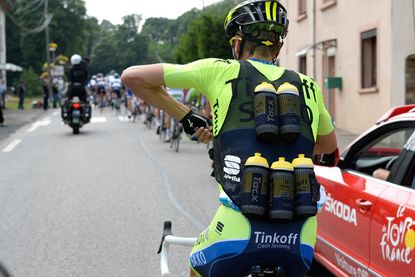
Matteo Tossato carries bottles on stage eight of the 2014 Tour de France

One of the most talked-about new pieces of equipment at the 2014 Tour de France hasn't been a super-light carbon-fibre frameset or an 11-speed electronic groupset, but a humble vest.
Anything that makes a rider's life easier is bound to go down well, and Sportful's 'bottle vest' is a simple yet effective solution to an age-old problem.
It consists of a mesh vest with pockets on the back designed to carry full water bottles, rather than a loyal domestique stuffing bottles in their back pockets and up their jersey.
Used exclusively by Tinkoff-Saxo during the Tour, the vest can be loaded with bottles by a helper in the team car and then slipped over the shoulders of the willing domestique. Once the water carrier has ridden up to the peloton, team-mates can grab their bottles themselves.
“It’s a really nice idea – and no one has thought about it before," said Tinkoff-Saxo's Daniele Bennati. "The bottle vest is much faster. When I go to the team car, the sport director or mechanic has prepared it for me, I put it on and off I go. When I reach my teammates, they can just take the bottles straight of my back."
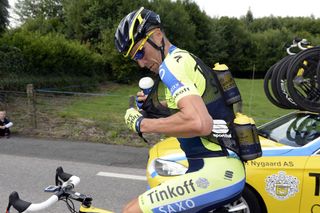
Get The Leadout Newsletter
The latest race content, interviews, features, reviews and expert buying guides, direct to your inbox!
Thank you for reading 20 articles this month* Join now for unlimited access
Enjoy your first month for just £1 / $1 / €1
*Read 5 free articles per month without a subscription
Join now for unlimited access
Try first month for just £1 / $1 / €1
Nigel Wynn worked as associate editor on CyclingWeekly.com, he worked almost single-handedly on the Cycling Weekly website in its early days. His passion for cycling, his writing and his creativity, as well as his hard work and dedication, were the original driving force behind the website’s success. Without him, CyclingWeekly.com would certainly not exist on the size and scale that it enjoys today. Nigel sadly passed away , following a brave battle with a cancer-related illness, in 2018. He was a highly valued colleague, and more importantly, an exceptional person to work with - his presence is sorely missed.

Black Inc's 48/58 wheelset now available for the rest of us and Fizik makes a light but bright statement...
By Luke Friend Published 12 April 24

Lidl-Trek have got the perfect recipe for beating SD Worx-Protime
By Tom Davidson Published 12 April 24

Tour de Yorkshire not due to return to north of England, although initial plans announced for new cycling event in area
By Tom Thewlis Last updated 29 July 22

Adam Blythe says cycling will miss Oleg Tinkov who is pulling his sponsorship from the sport
By Jack Elton-Walters Published 11 November 16
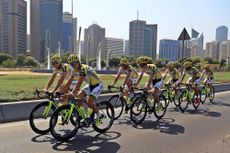
Harking back to their Tinkoff Credit Systems days, the Russian team unveil their billionth new kit in their history for the Abu Dhabi Tour
By Stuart Clarke Published 19 October 16

Sitting almost three minutes down on race leader Nairo Quintana, Tinkoff's Alberto Contador admits he's a long way from winning the race
By Gregor Brown Published 30 August 16
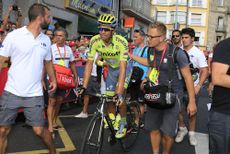
Alberto Contador admits he can't afford to lose any more time if he's to have a chance of winning a fourth Vuelta a España title
By Gregor Brown Published 25 August 16

Alberto Contador says he couldn't follow the pace of the leading riders on the steep summit finish to stage three of the Vuelta a España
By Gregor Brown Published 23 August 16

Adam Blythe leads Tinkoff in the Cyclassics Hamburg on Sunday looking for his win in the British champion stripes
By Chris Marshall-Bell Published 19 August 16

Road race world champion Peter Sagan returns to his off-road roots, contesting the cross-country mountain bike event in Rio 2016
By Nigel Wynn Published 4 August 16
Useful links
- Tour de France
- Giro d'Italia
- Vuelta a España
Buyer's Guides
- Best road bikes
- Best gravel bikes
- Best smart turbo trainers
- Best cycling computers
- Editor's Choice
- Bike Reviews
- Component Reviews
- Clothing Reviews
- Contact Future's experts
- Terms and conditions
- Privacy policy
- Cookies policy
- Advertise with us
Cycling Weekly is part of Future plc, an international media group and leading digital publisher. Visit our corporate site . © Future Publishing Limited Quay House, The Ambury, Bath BA1 1UA. All rights reserved. England and Wales company registration number 2008885.

COMMENTS
September 20, 2007 - Floyd Landis, winner of the 2006 Tour de France, is stripped of his title when an arbitration panel rules in favor of the USADA (US Anti-Doping Agency). Landis, the first Tour ...
Timekeeper-commissaires shall give a new time. However, in stages expected to finish in bunch sprints, the time gap required for a split shall be 3 seconds - Article 14. The world's biggest bike ...
How many water bottles does the Tour de France use anyway? Lets look at the maths quickly: The Tour has 176 riders and let's say each rider uses 4 bottles daily. He ends each day with one bottle and is - theoretically - able to use that bottle again, leaving 3 'disposables' daily. The Tour is 21 days long, but we need to subtract 2 rest days ...
At the Tour de France this summer, that would be 100 bidons times 23 teams, then times the 21 days of racing. It adds up to 48,300 bidons along a course of 2,000-plus miles.
The sticky bottle is an exhausted cyclist's best friend. When the rider finds himself dropped from the peloton, the team manager speeds up the car to get alongside them. As soon as the rider is within reach, the manager hands them a water bottle from the open window. And now comes the fated moment…. While the handover is in process, both ...
Feeding rules. Deceuninck-Quick-Step's Julian Alaphilippe was given a 20-second time penalty for taking a water bottle when it wasn't permitted in the 2020 Tour de France, costing him the race lead. Adam Yates, who was four seconds behind Alaphilippe at the start of the day, took the yellow jersey as a direct result.
Here's how it works. Riders fight against punishment for throwing bottles to roadside fans. The CPA rider's association is leading a push by riders to change the new strict UCI rules on the ...
The adjusted rules will be applicable from the start of La Course by le Tour de France and the Tour de France (26 June) until the end of 2021. An assessment will be carried out at the end of the season, with all implicated parties, with a view to potential new adjustments for 2022.
Today's stage of the Tour de France is a very long, very hot affair, with air temperatures above 40 degrees and road temperatures above 60 degrees. In such conditions, the biggest challenge is staying hydrated, and to do that you need a lot of bottles. In the ever-shifting organism that is the peloton, there are certain riders that are ...
Download the app . SAINT GIRON, France (VN) — The UCI race jury hit the reverse button overnight and pulled back time penalties against Rigoberto Urán, Serge Pauwels, and George Bennett. The pair was slapped with 20-second time penalties after taking illegal water bottles too close to the finish line in Thursday's marathon across the ...
The UCI penalizes riders who feed in the first 30 km and last 20 km of stage races, including the Tour de France. Those caught feeding in the first stretch face about a $200 fine. Those caught in ...
Tour de France cyclists burn up to 7,000 calories a day so replenishing these stocks is a huge deal. Race nutrition is one of the most important considerations for any rider hoping to perform consistently over three weeks. Therefore, it's crucial a rider doesn't skip lunch as the effects of a calorie deficit could be race ending.
The 2023 Tour de France starts on July 1, and these days you have a variety of legal, dependable ways to watch it live or on demand.But knowing when and how to tune in is only half the battle ...
Deceuninck-Quick-Step director Tom Steels gives Tim Declercq a sticky bottle on stage 2 of the 2020 Tour de France. Watrbodl now sells a Sticky Bottle for the rest of us. Photo: Getty Images / Watrbodl ... Download the app. A sticky bottle, as many race fans know, is when a rider holds onto a water bottle being handed out of a moving car and ...
The Tour is made up of 21 separate " stages "; one stage per day. Think of each stage as a standalone race. In each stage, all of the riders start at Point A and ride to Point B. The first person to reach Point B wins that stage and gets a prize. The next day, everyone starts at Point C and races to Point D, and so on.
Tour De France For Dummies. Tour rules and regulations are detailed in race Articles. Listed in the Technical Guide, they range from participation to disqualification, medical care to prize money. Rules are written and detailed in French and English. Because French is the universal language in cycling (Lance Armstrong, for example, is fluent ...
Tour de France - The Rules Explained. By WeLoveCycling June 30, 2017 at 1:13 pm. Some teams will focus on the general classification Yellow Jersey, whereas others will focus on winning sprints for The Green or the King of the Mountains Spotted Jersey. There are many rules, both spoken and unspoken, as teams stand to gain a lot from ...
In 1986 the Coca-Cola water bottle became a familiar sight in the cycling world. This is because the company became the Tour de France's official drinks supplier after it took over from the French brand Perrier. These days cycling teams have their's or their sponsor's logos printed onto their bottles. Rules On Bidon Use In The Tour de France
In one of the very few studies to offer clues as to what professional riders eat and drink in the modern era, a seminal investigation of five 1988 Tour de France competitors published in 1989 ...
The Tour de France for non-professional riders. Dial the emergency no. if you witness a serious accident and indicate the kilometric marker where you are located: +33 9 72 45 60 01 (this number is indicated on your race number).You can also dial this number in the event of a problem on the route so that the Race Headquarters can be informed if necessary.
The new Fly Tour de France series is made of four Fly bottles (three 550ml and one 750ml) and 1 Mia bottle in stainless steel with the official colours of the most eagerly awaited cycling event of the year. Each bottle features at the forefront the Tour de France world-famous logo created by French designer Joel Guenoun in 2002. In addition to the iconic yellow bottle, the black version with ...
Image: Oleg Tinkov Twitter As we tweeted yesterday during our Twitter coverage of stage 1 of the Tour de France, we noticed a Tinkoff-Saxo rider wearing what appears to be a new vest for carrying water bottles.. We hadn't seen this exact type of vest in a road race before. This soon caught the attention of many on social media.. Here it is in action on stage 2:
Sportful make the Tinkoff-Saxo's domestique's job easier with its vest capable of carrying multiple water bottles to team-mates. Matteo Tossato carries bottles on stage eight of the 2014 Tour de ...